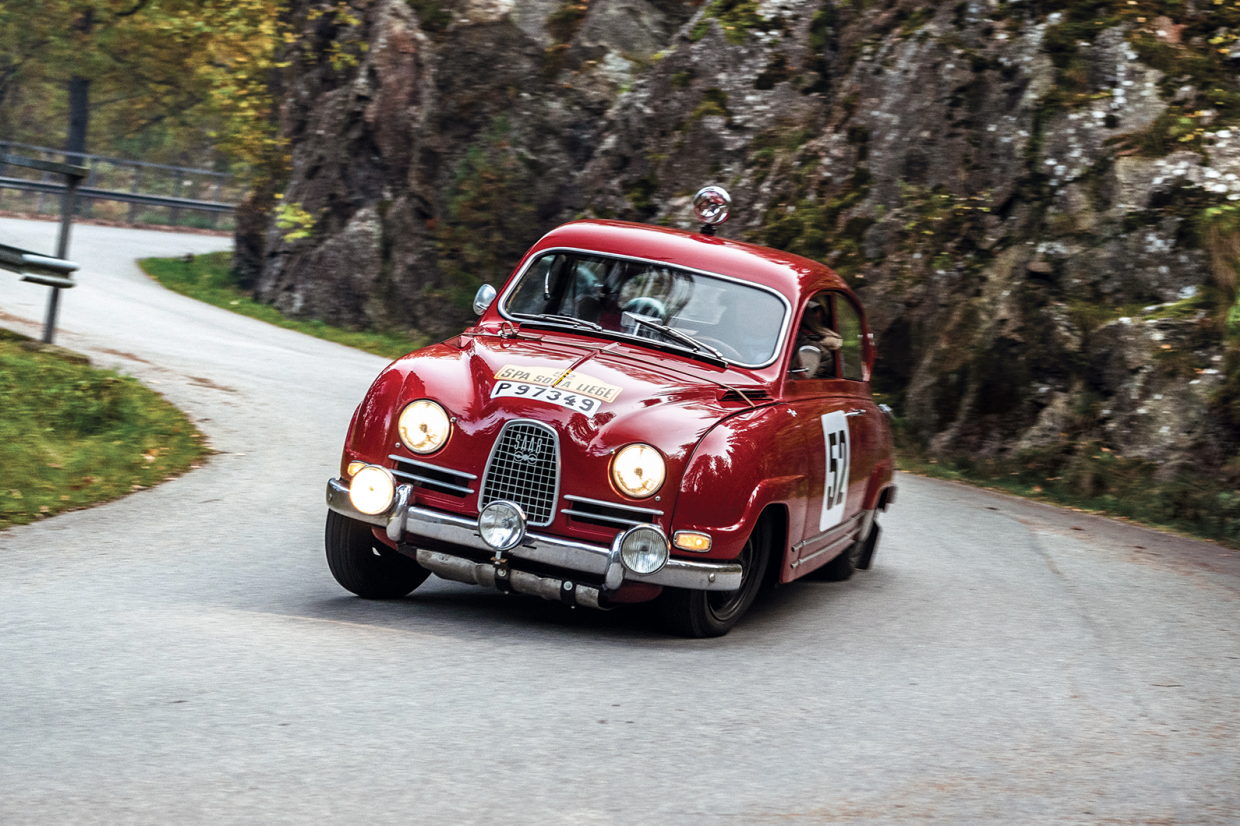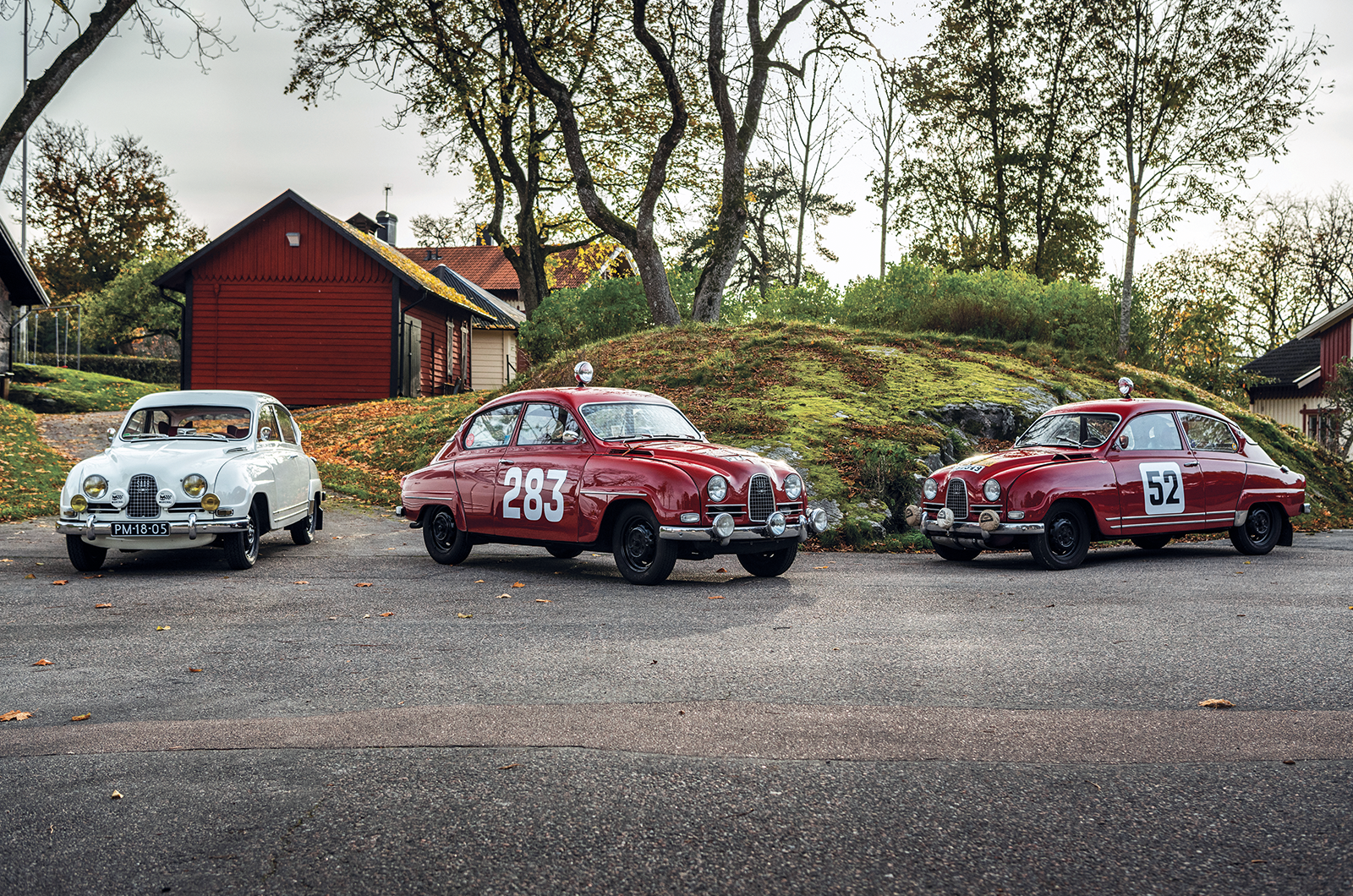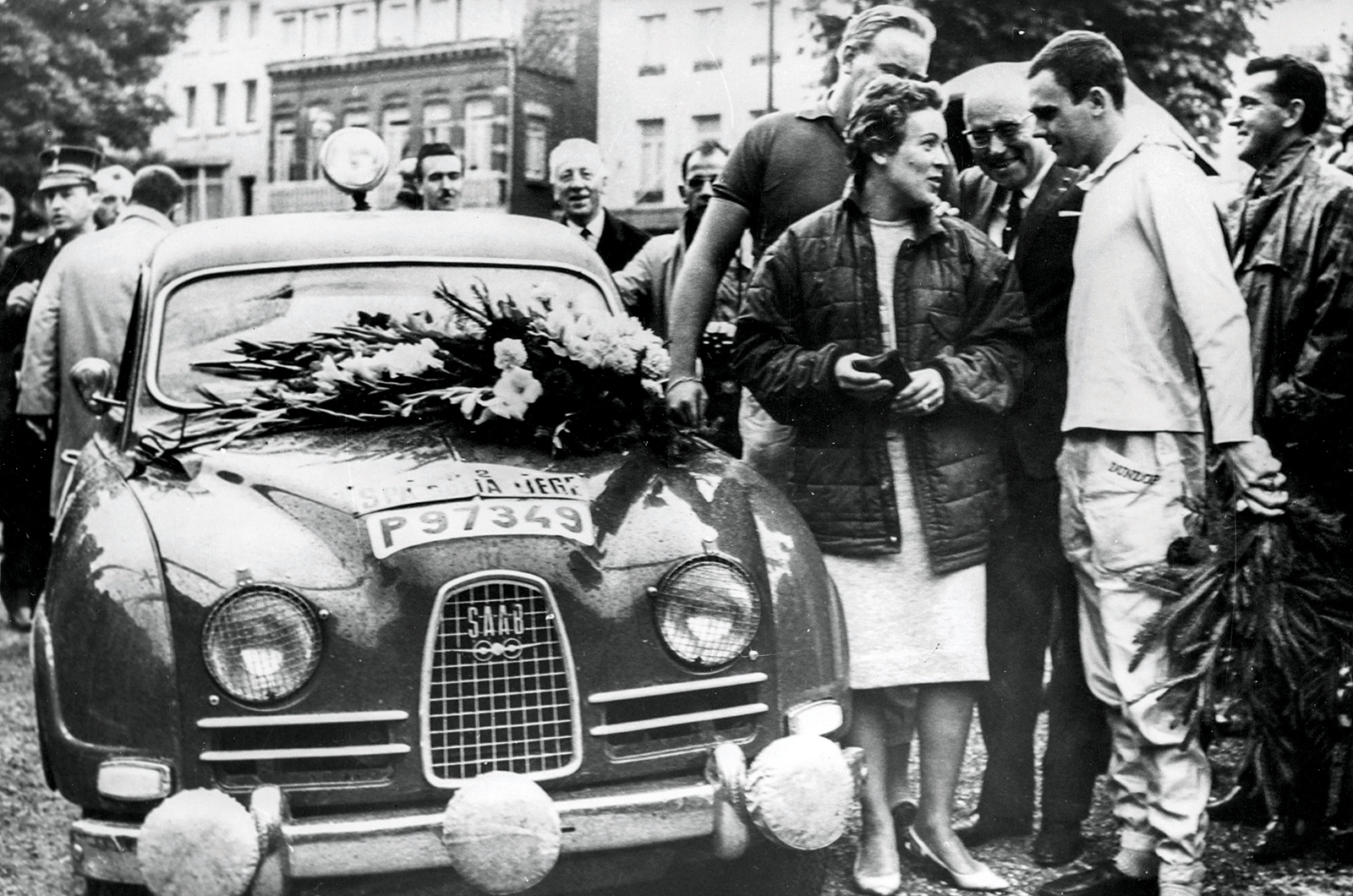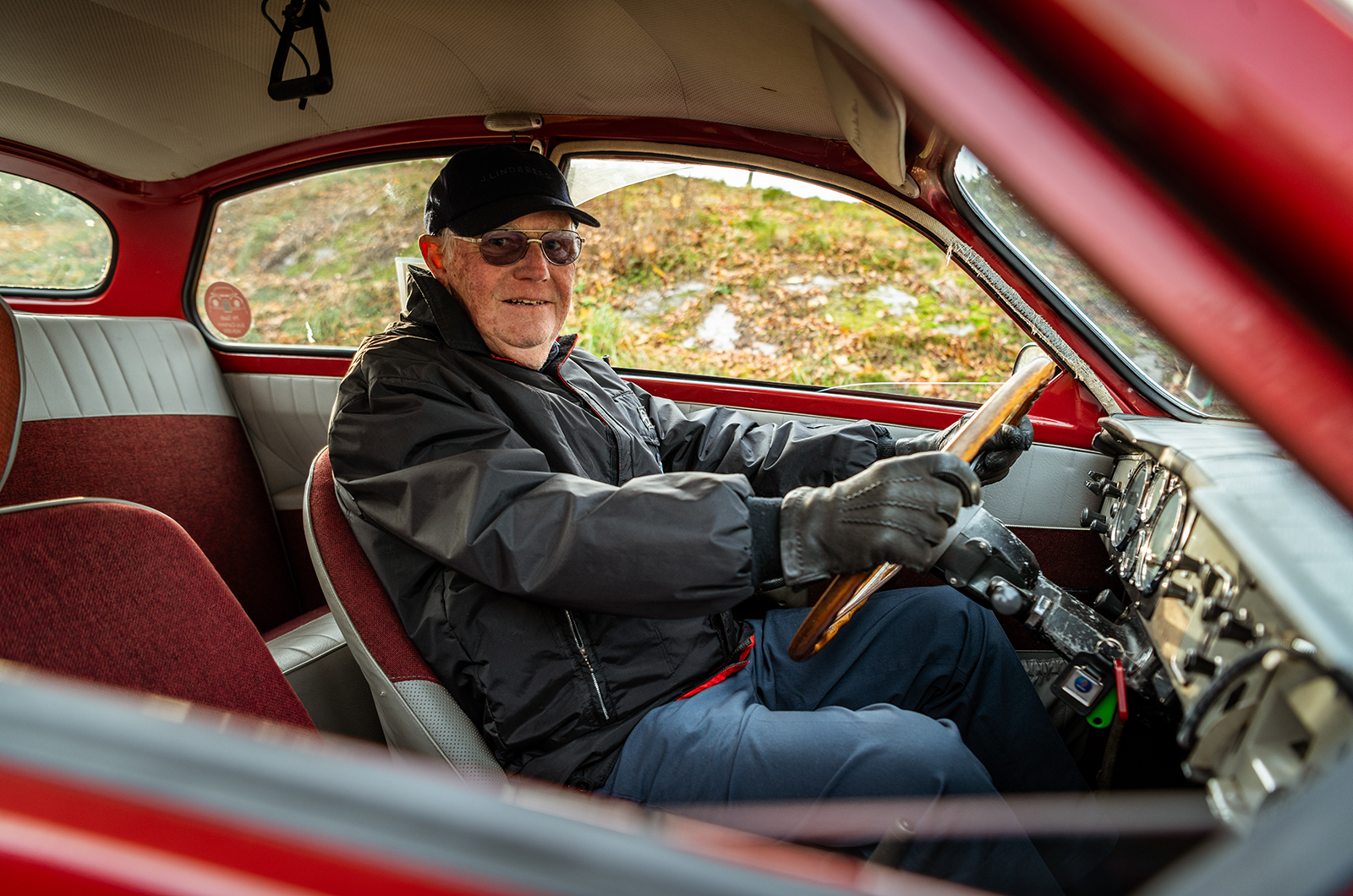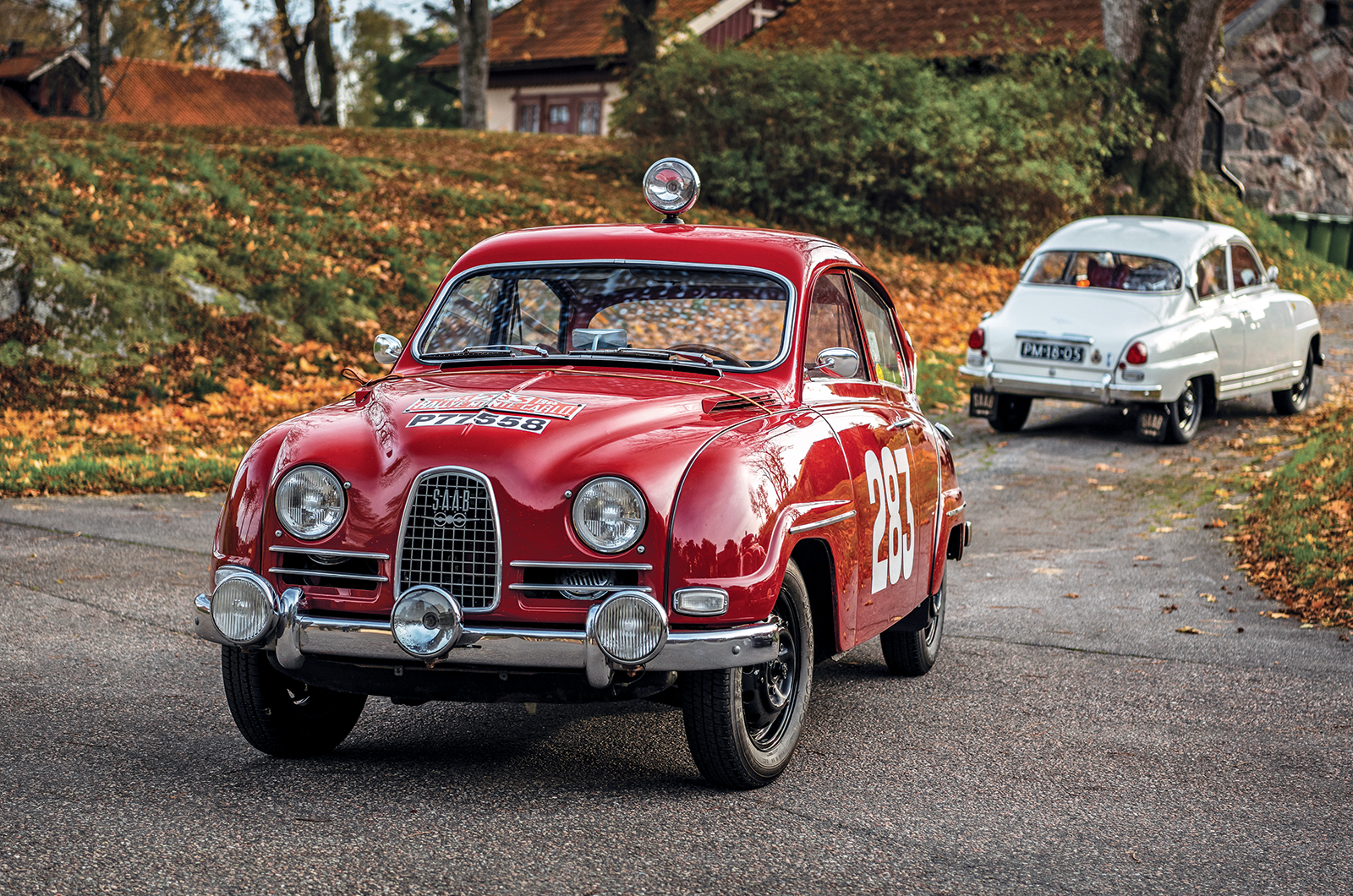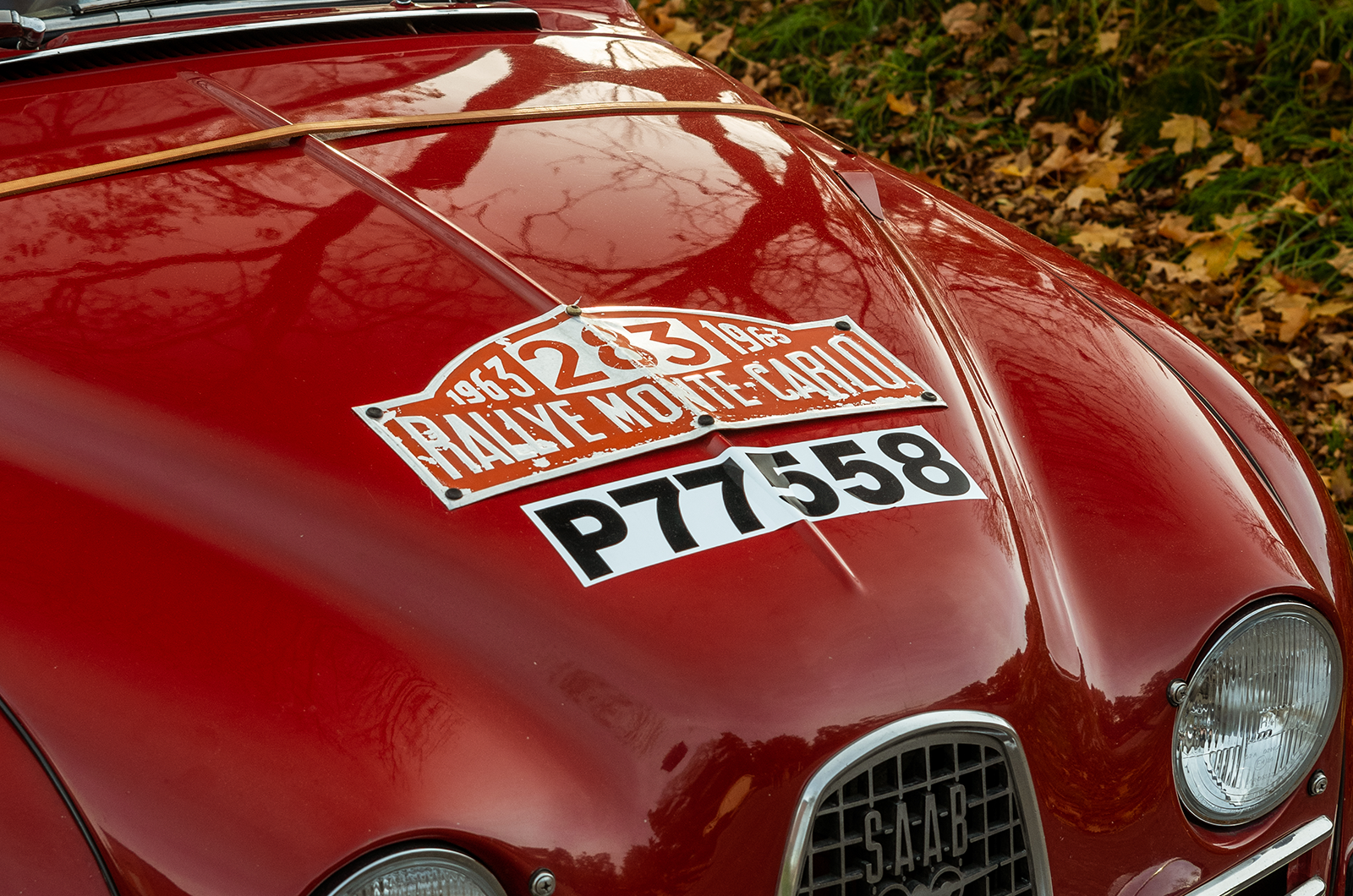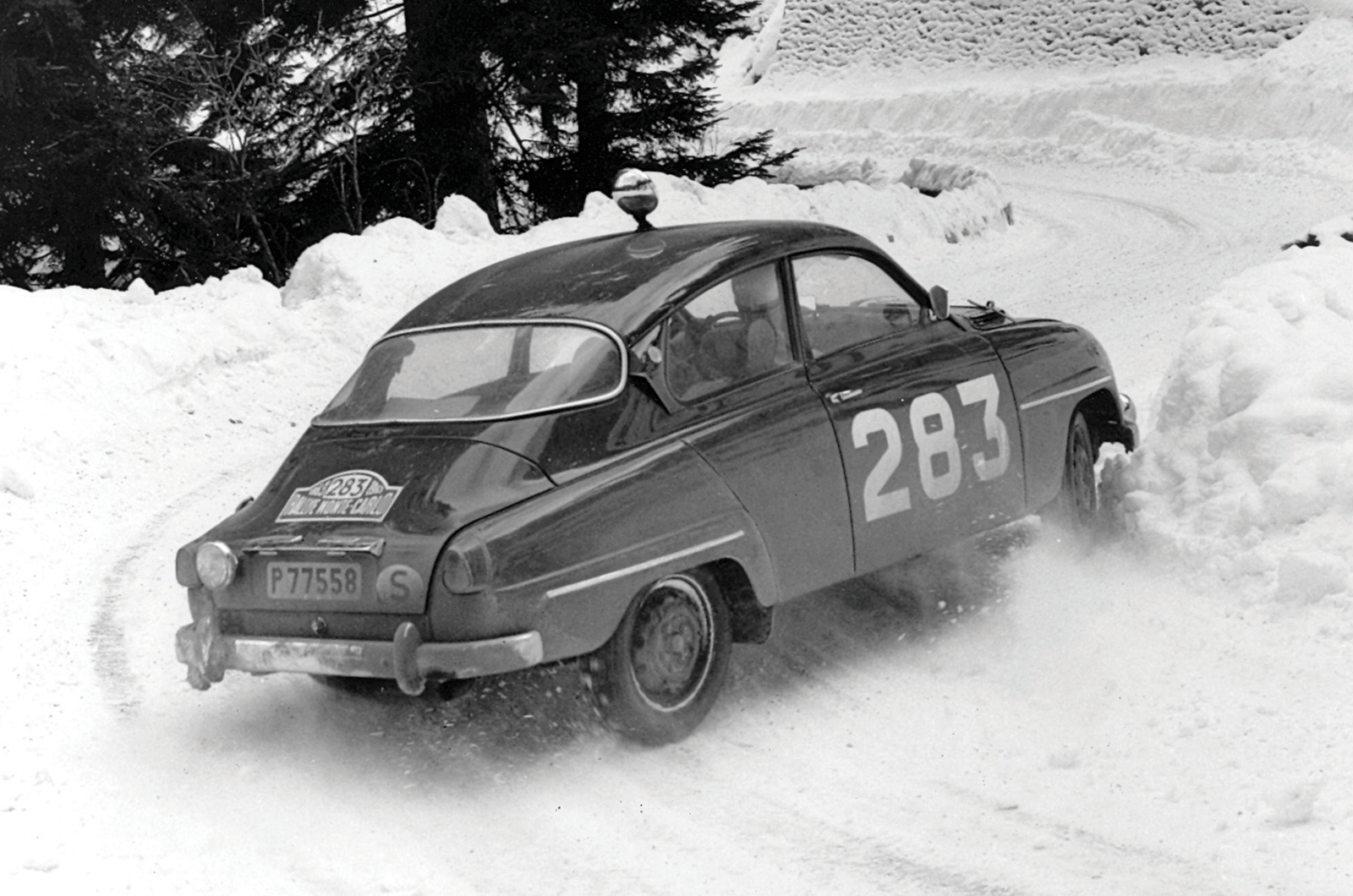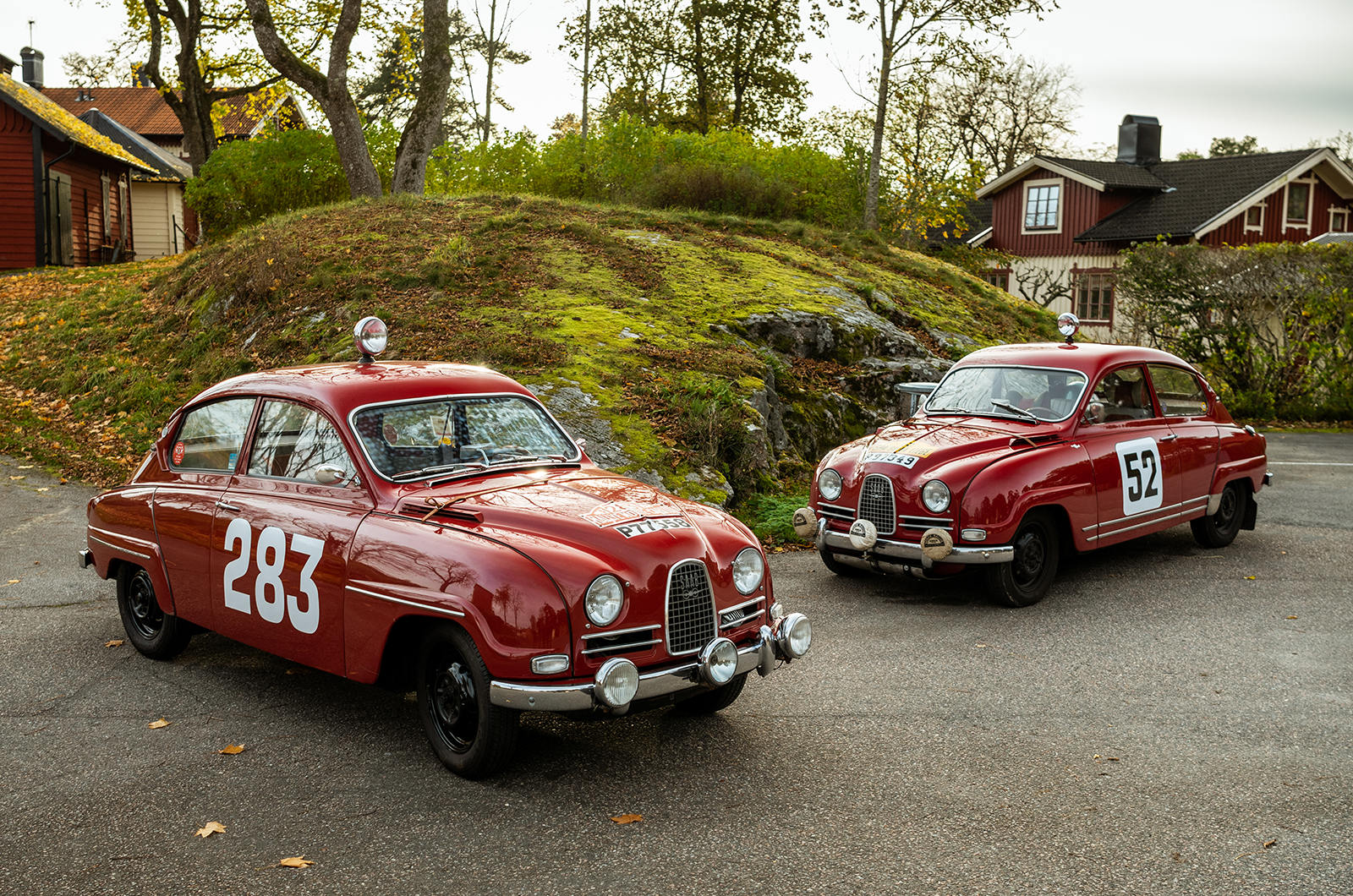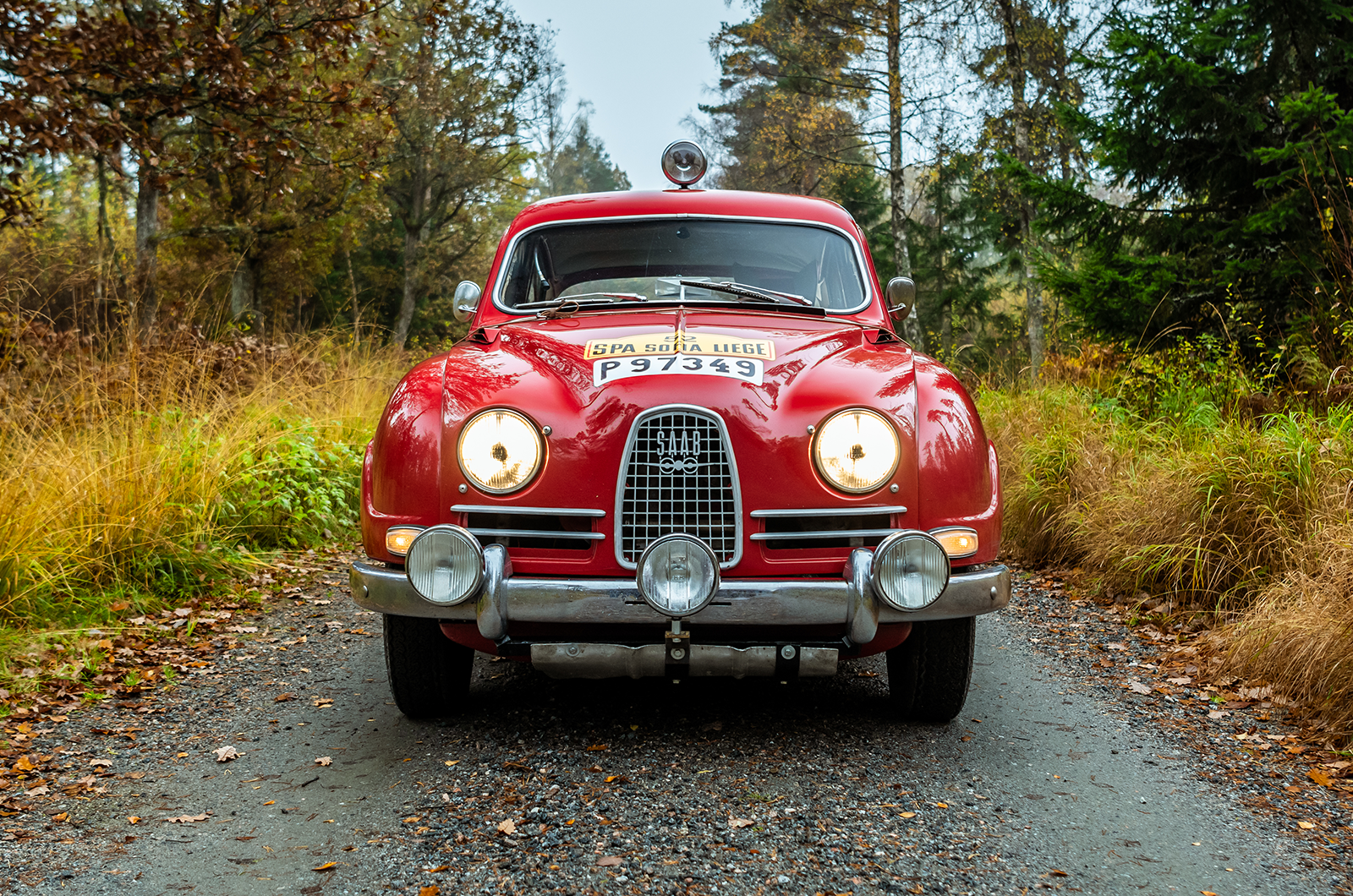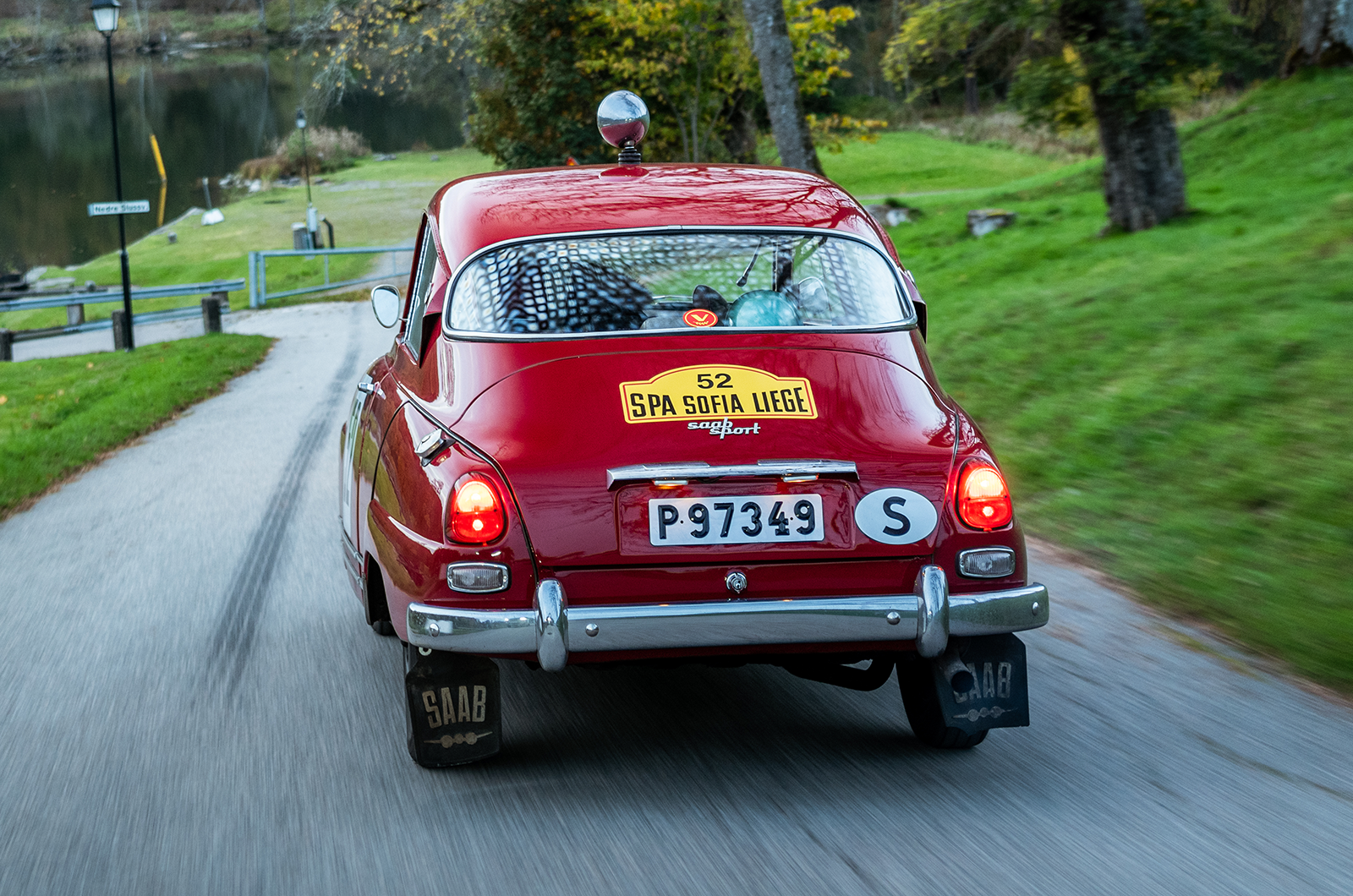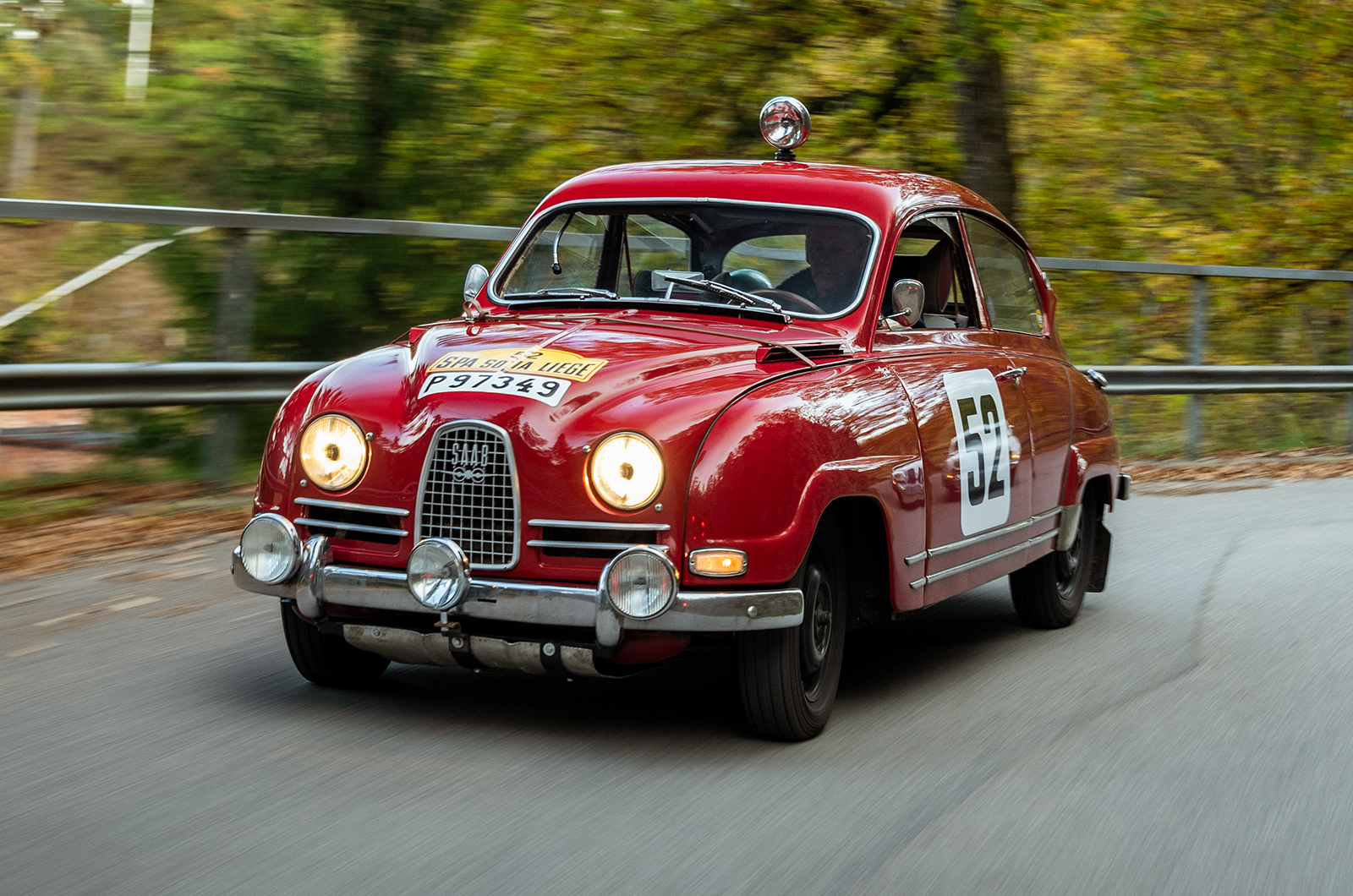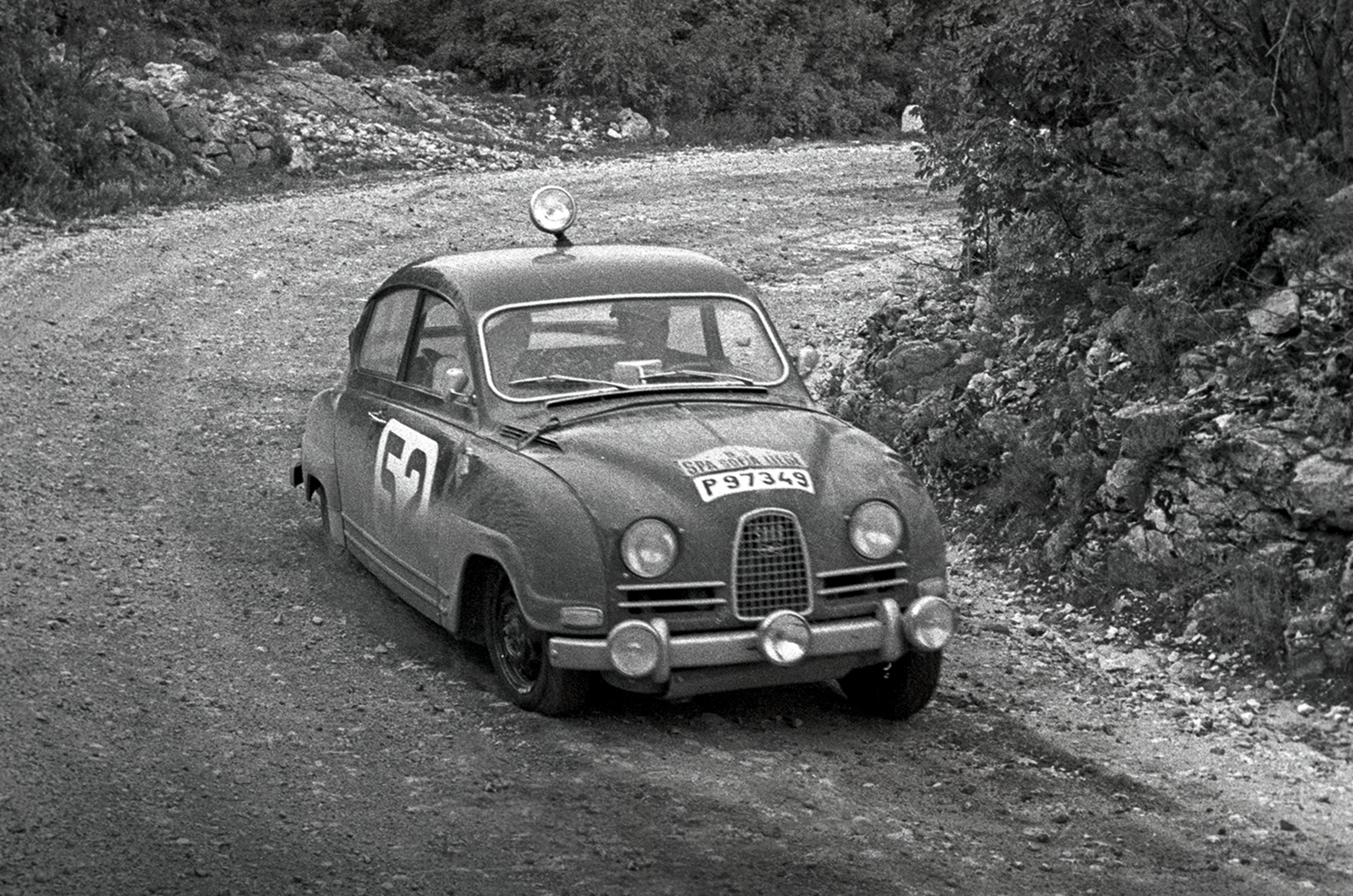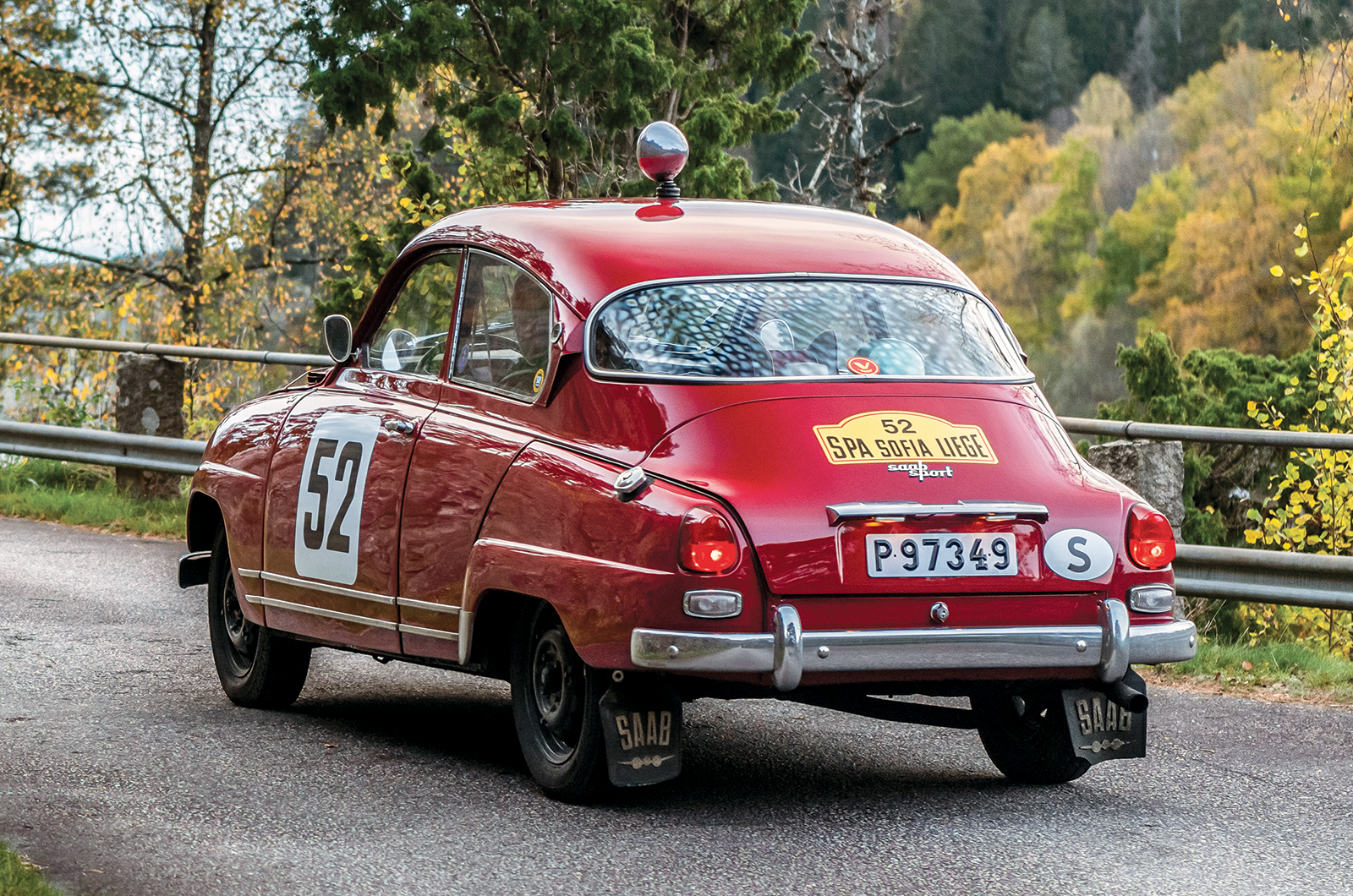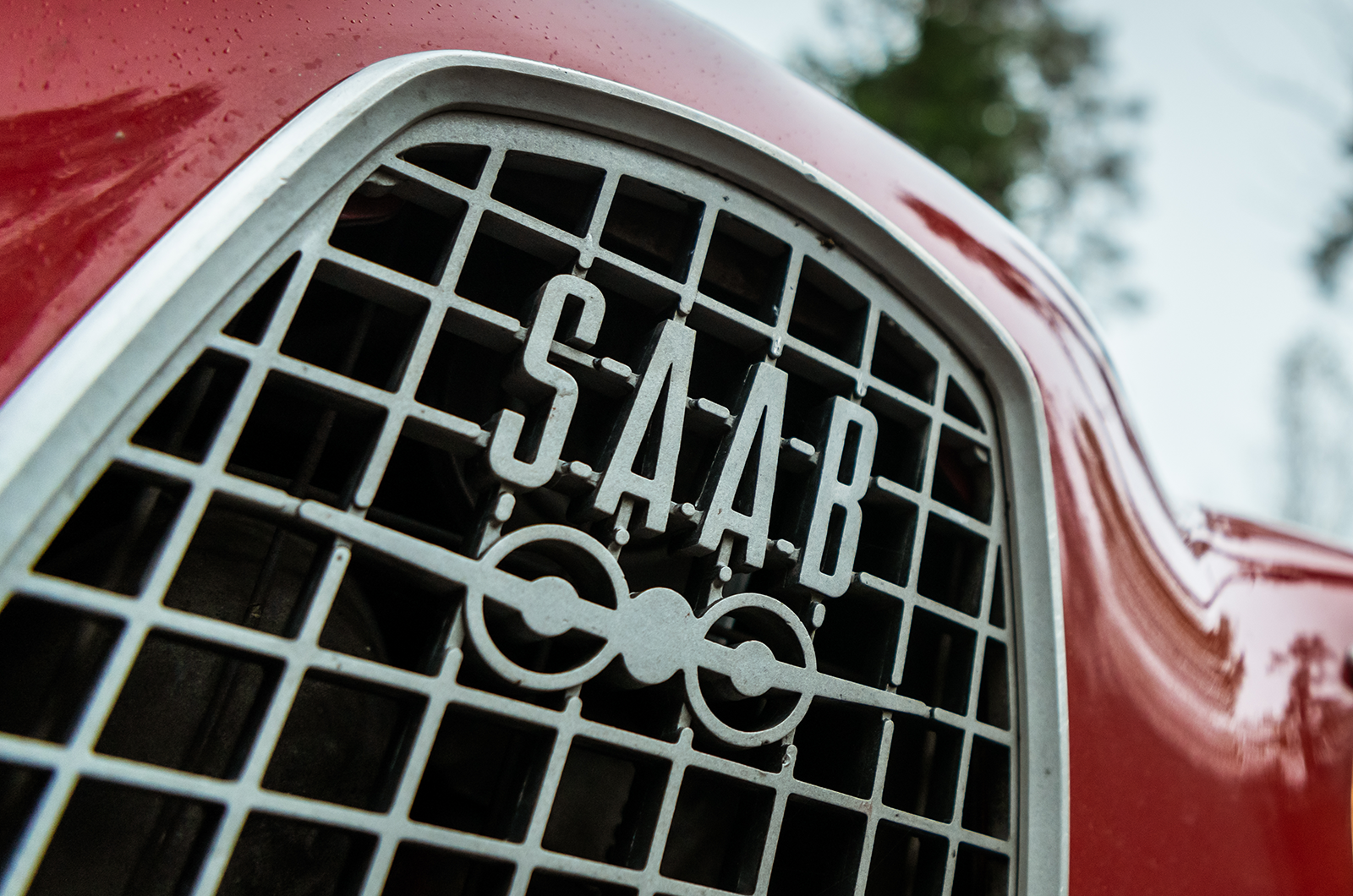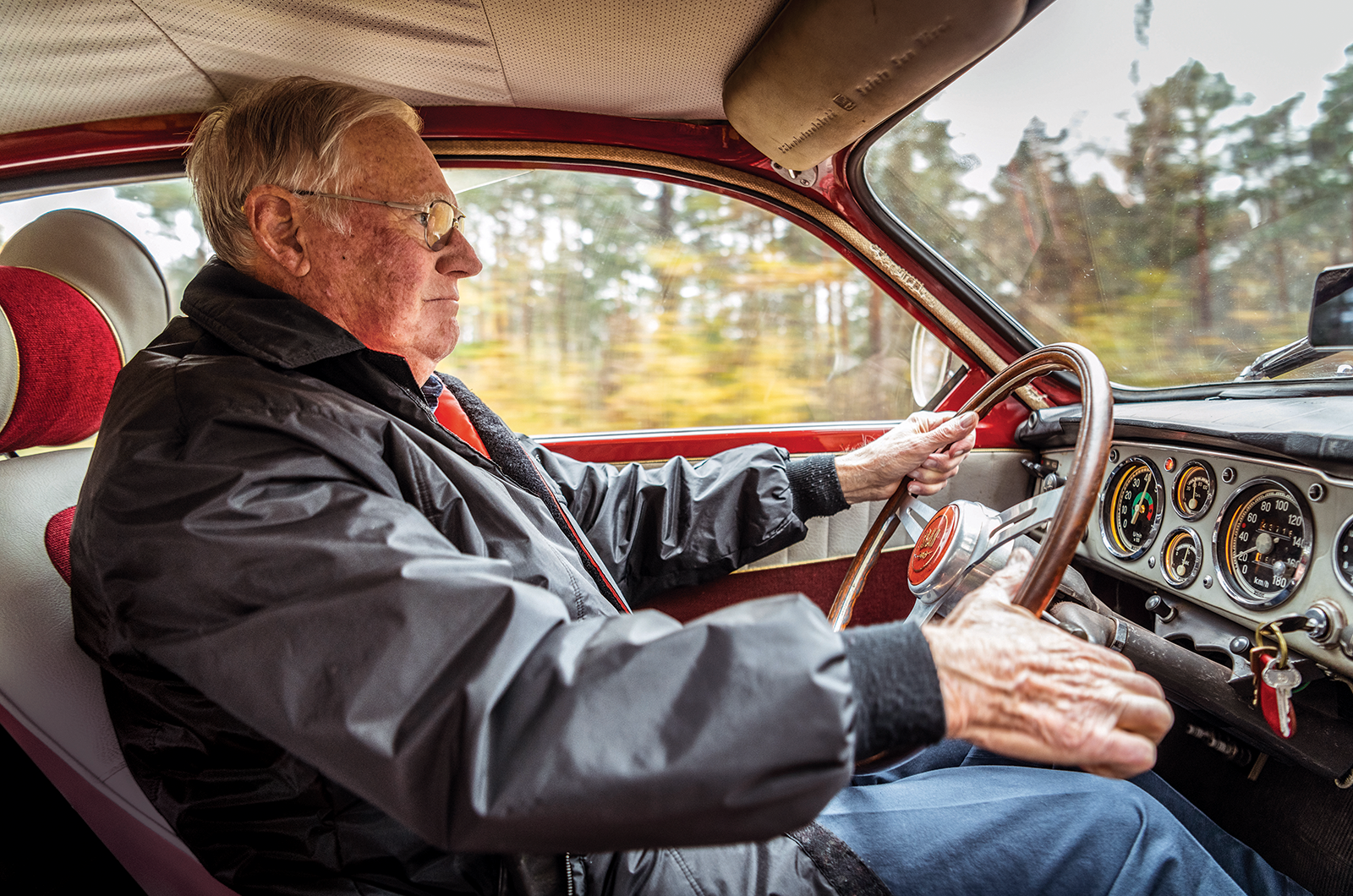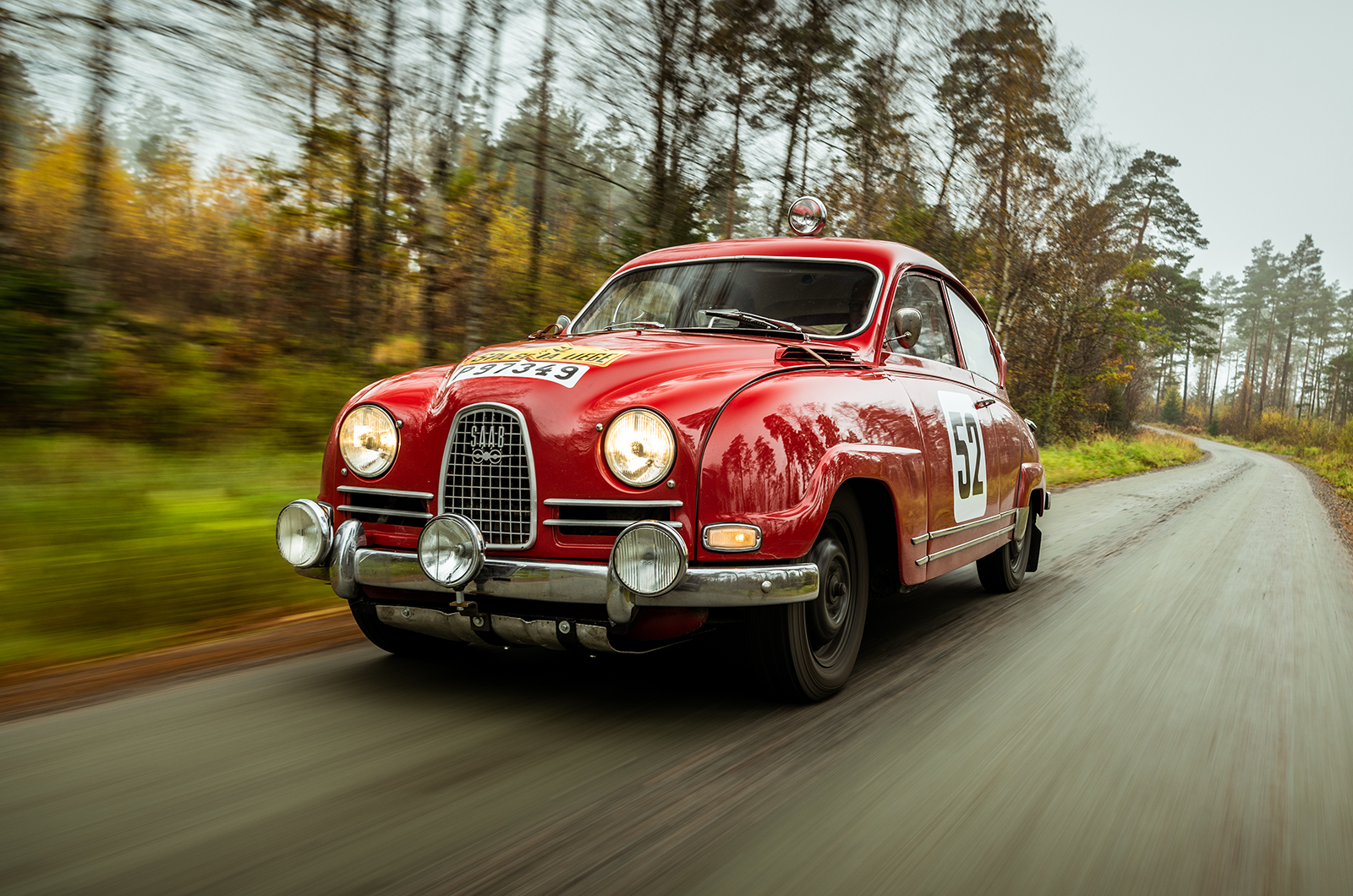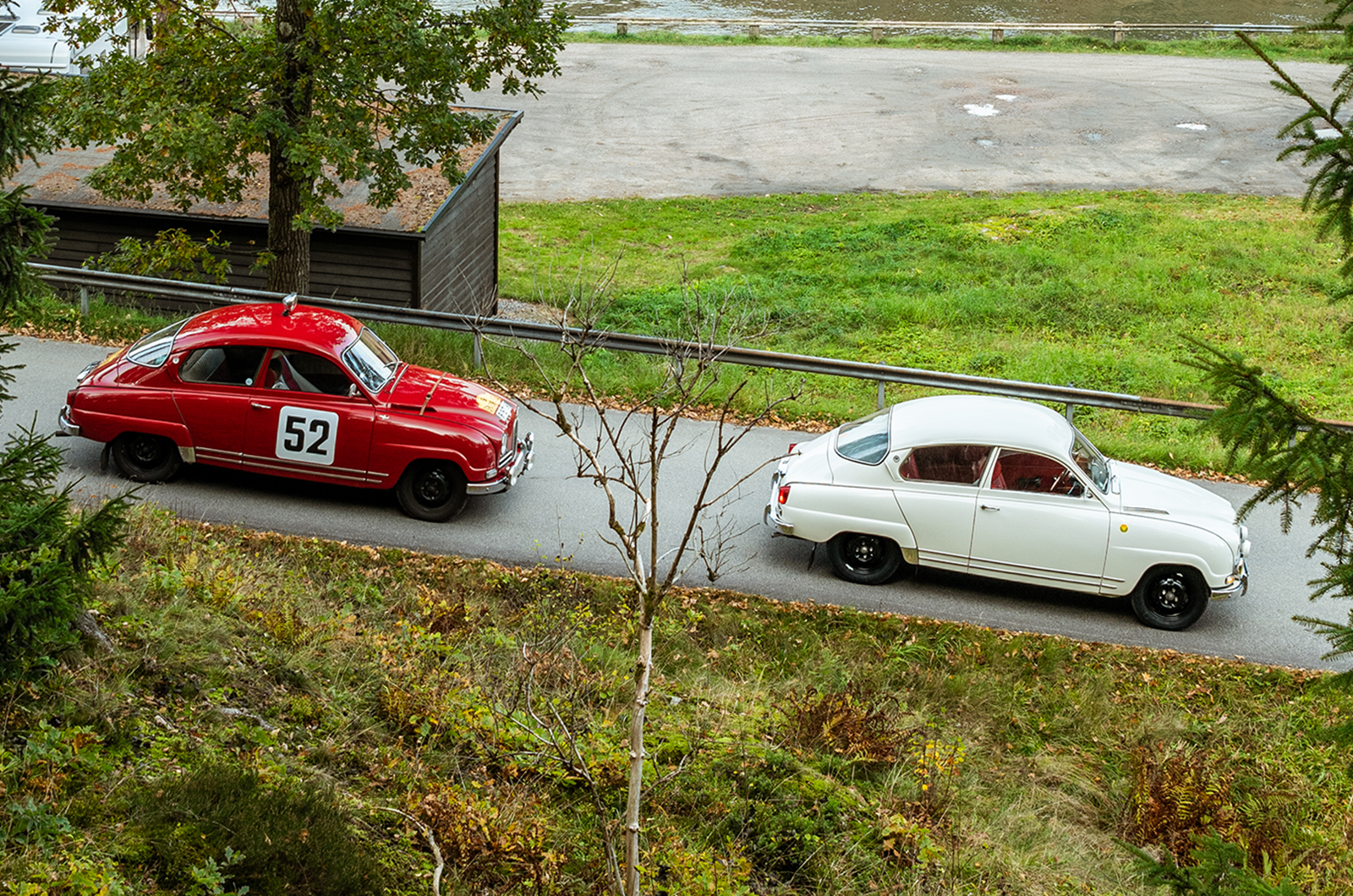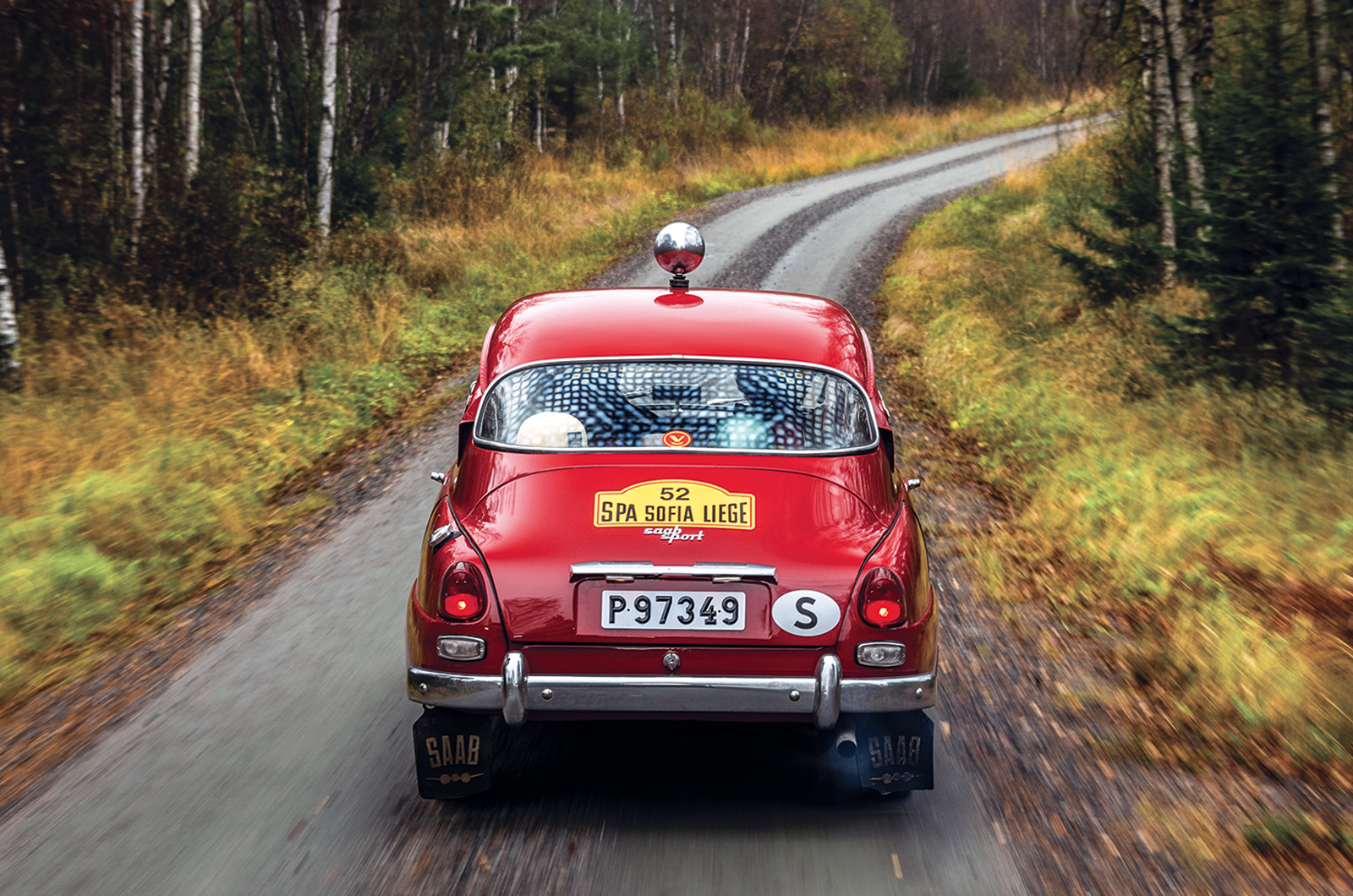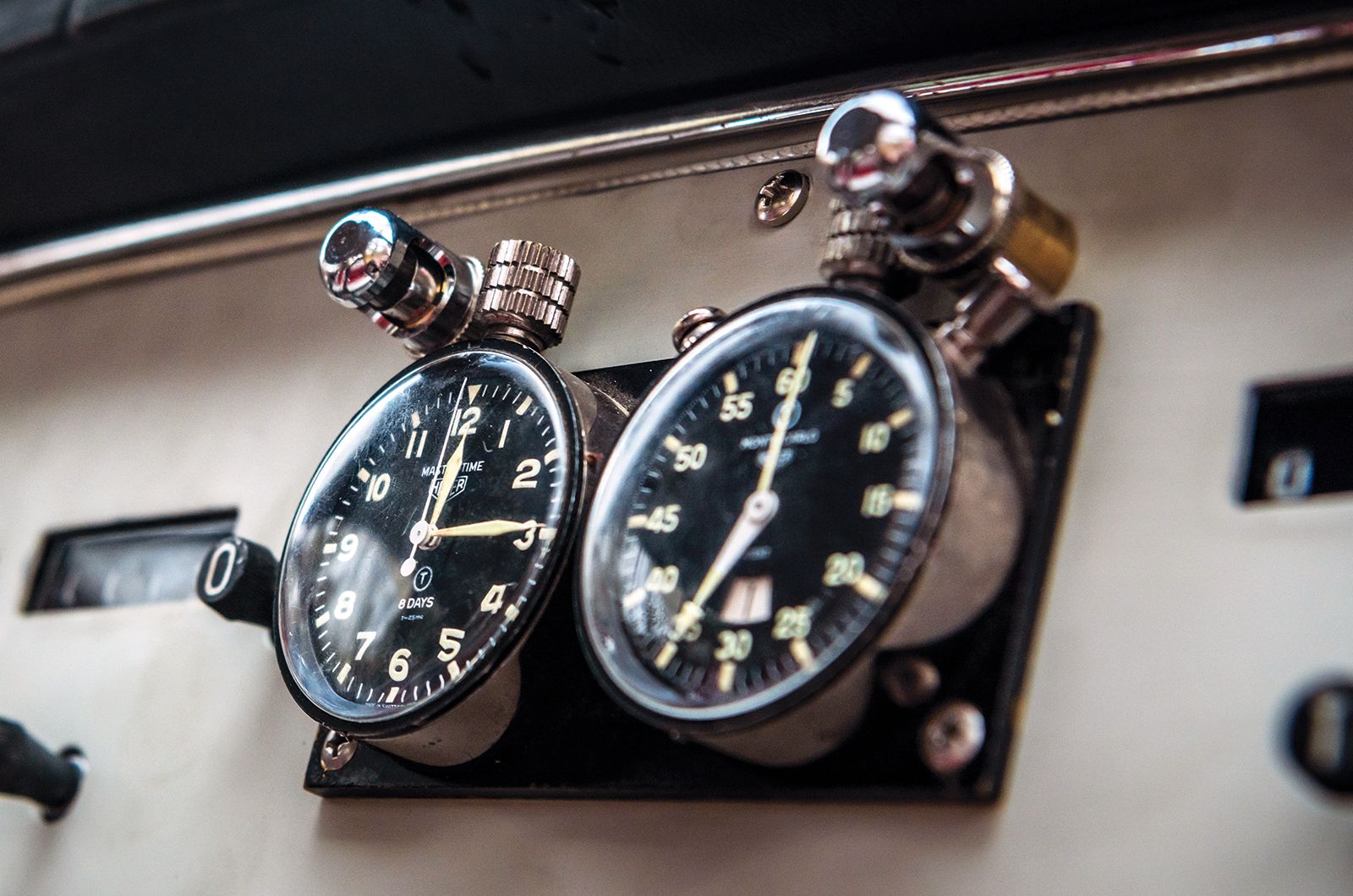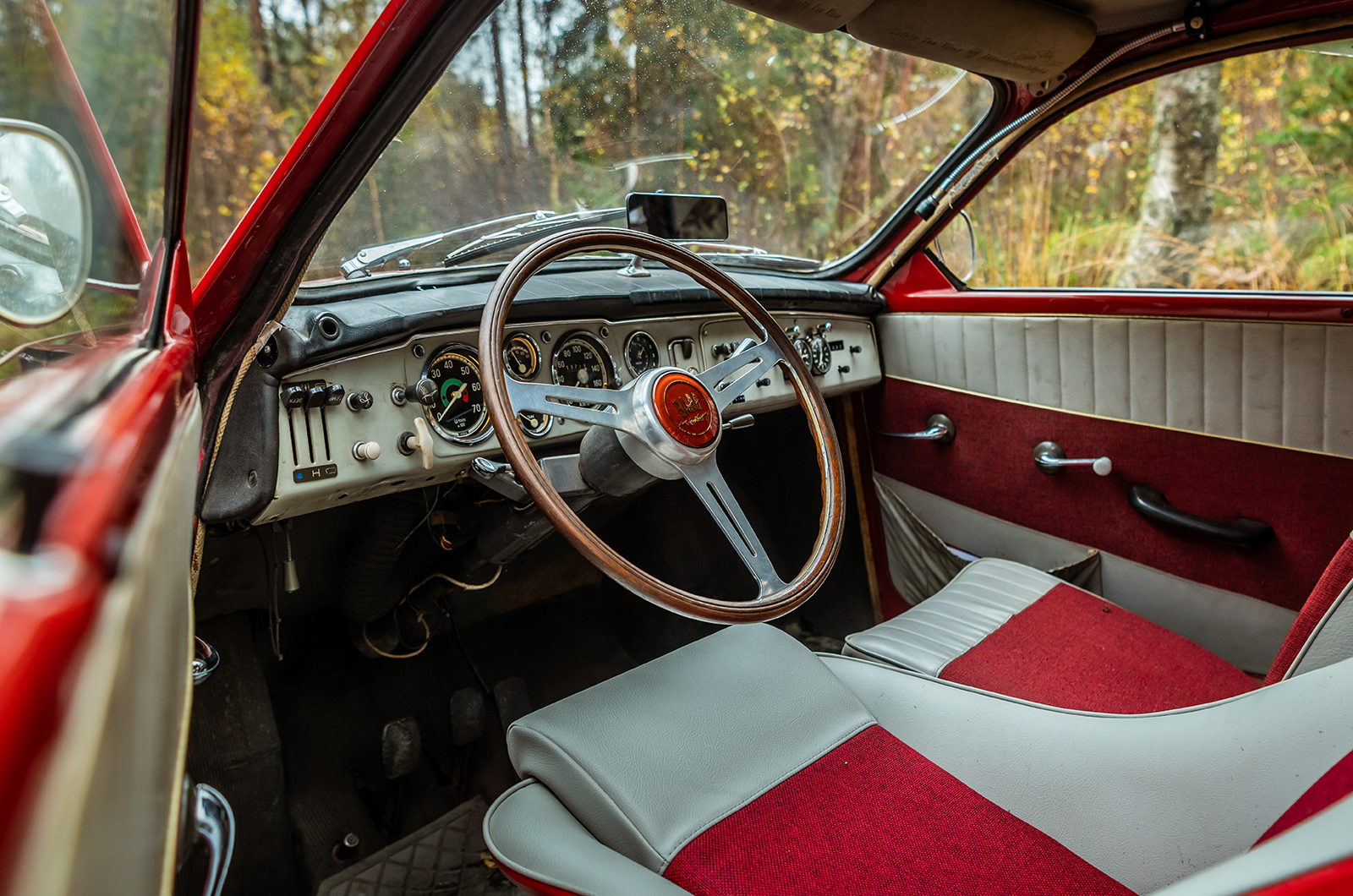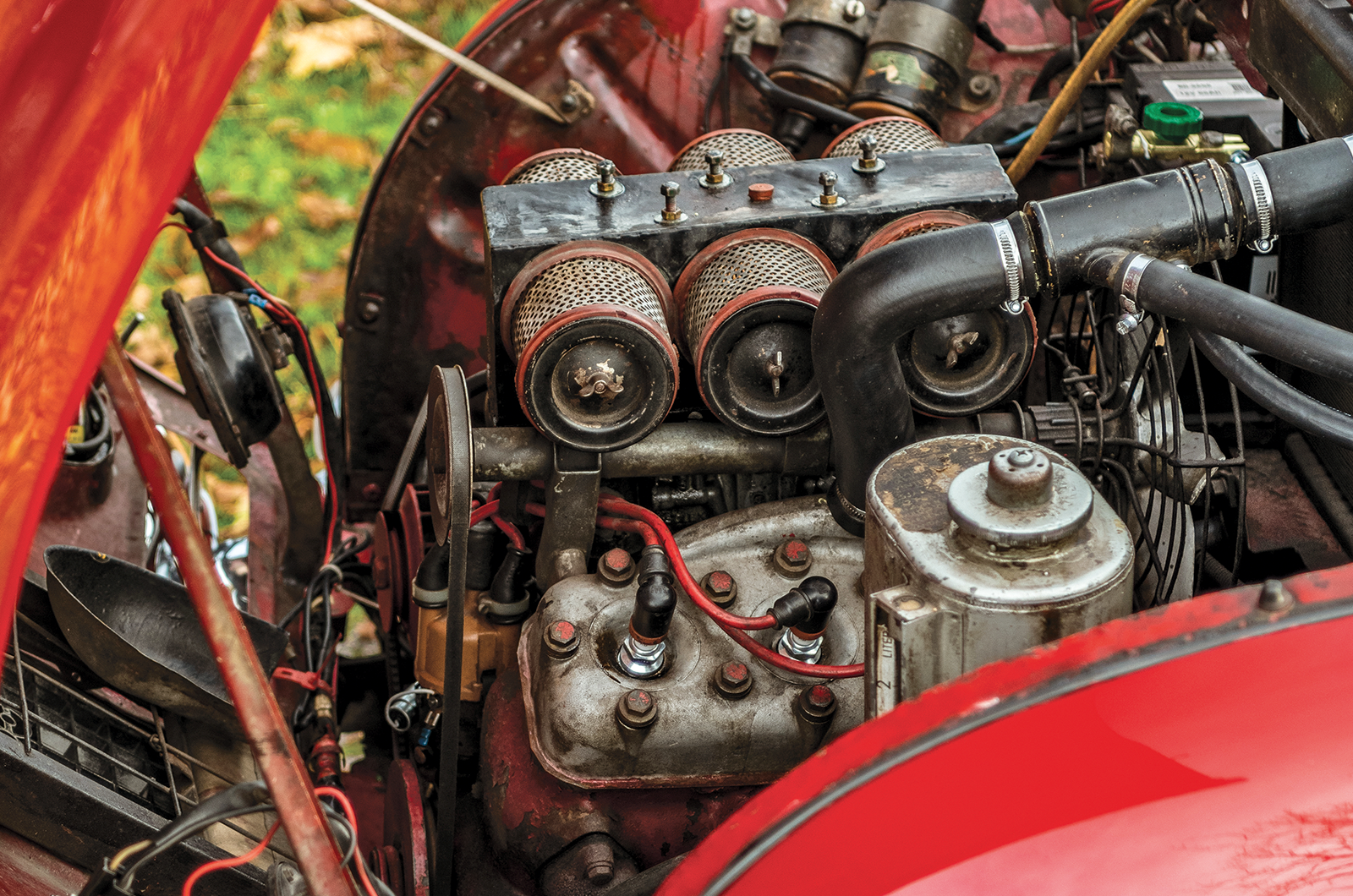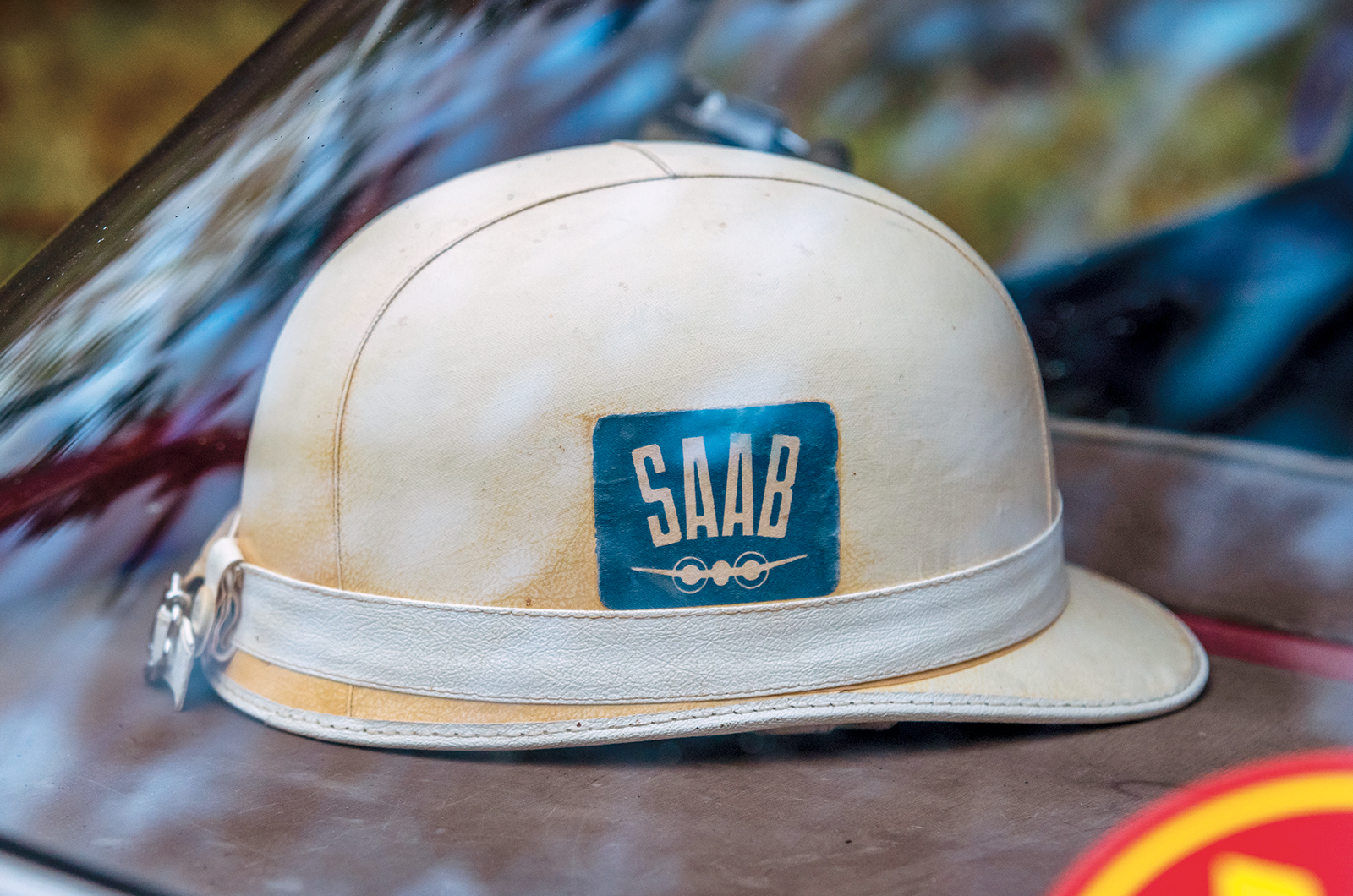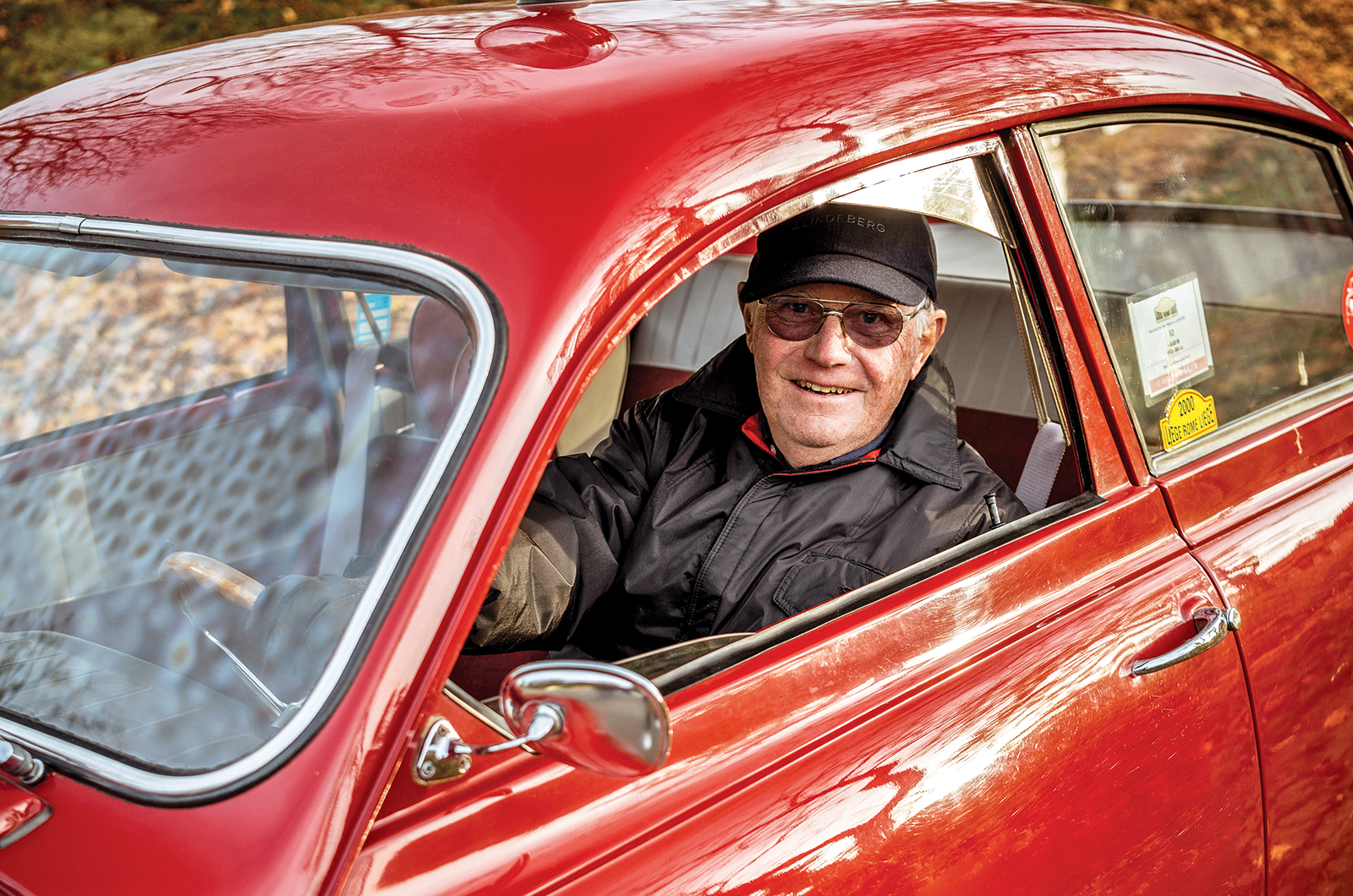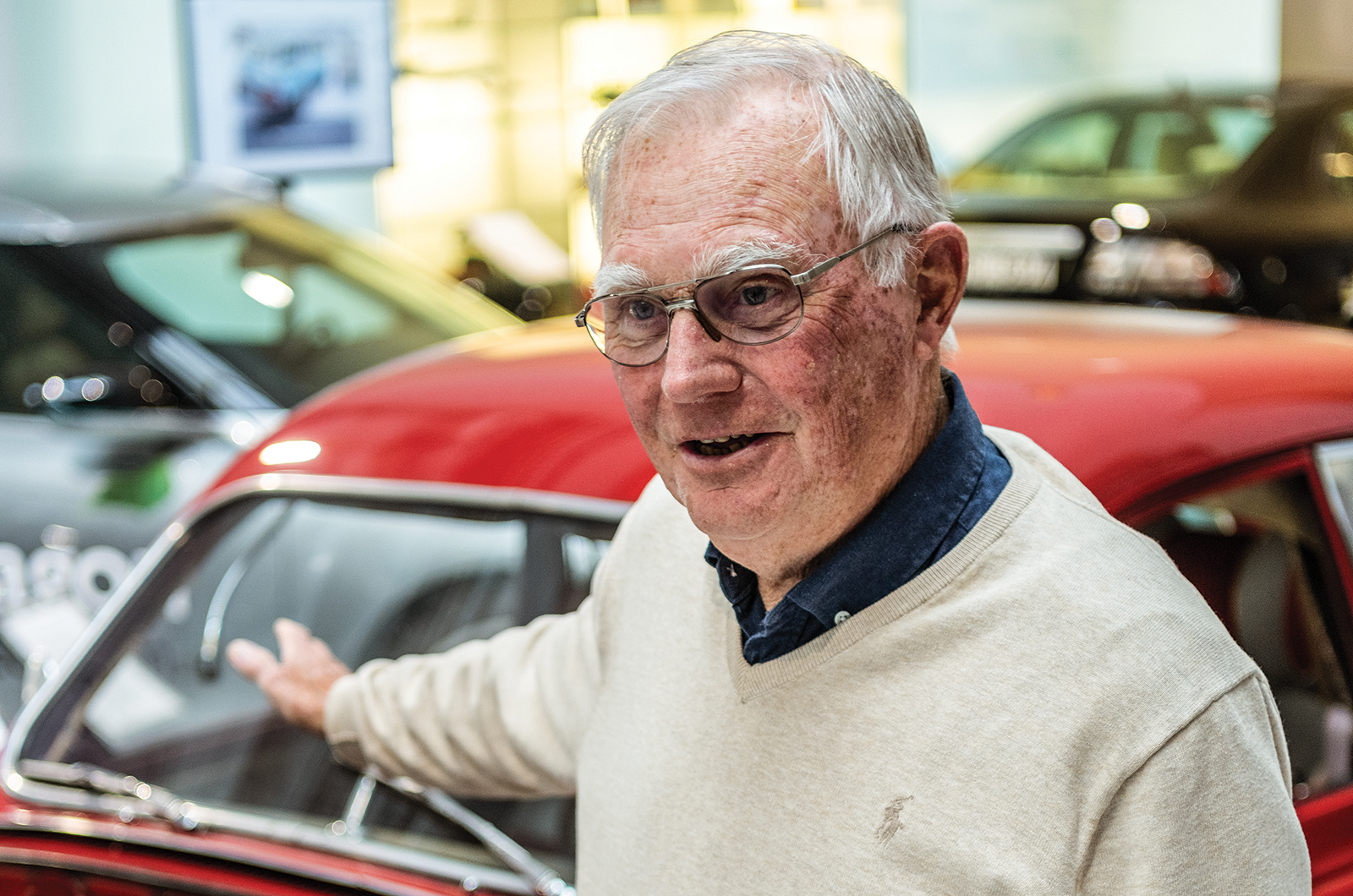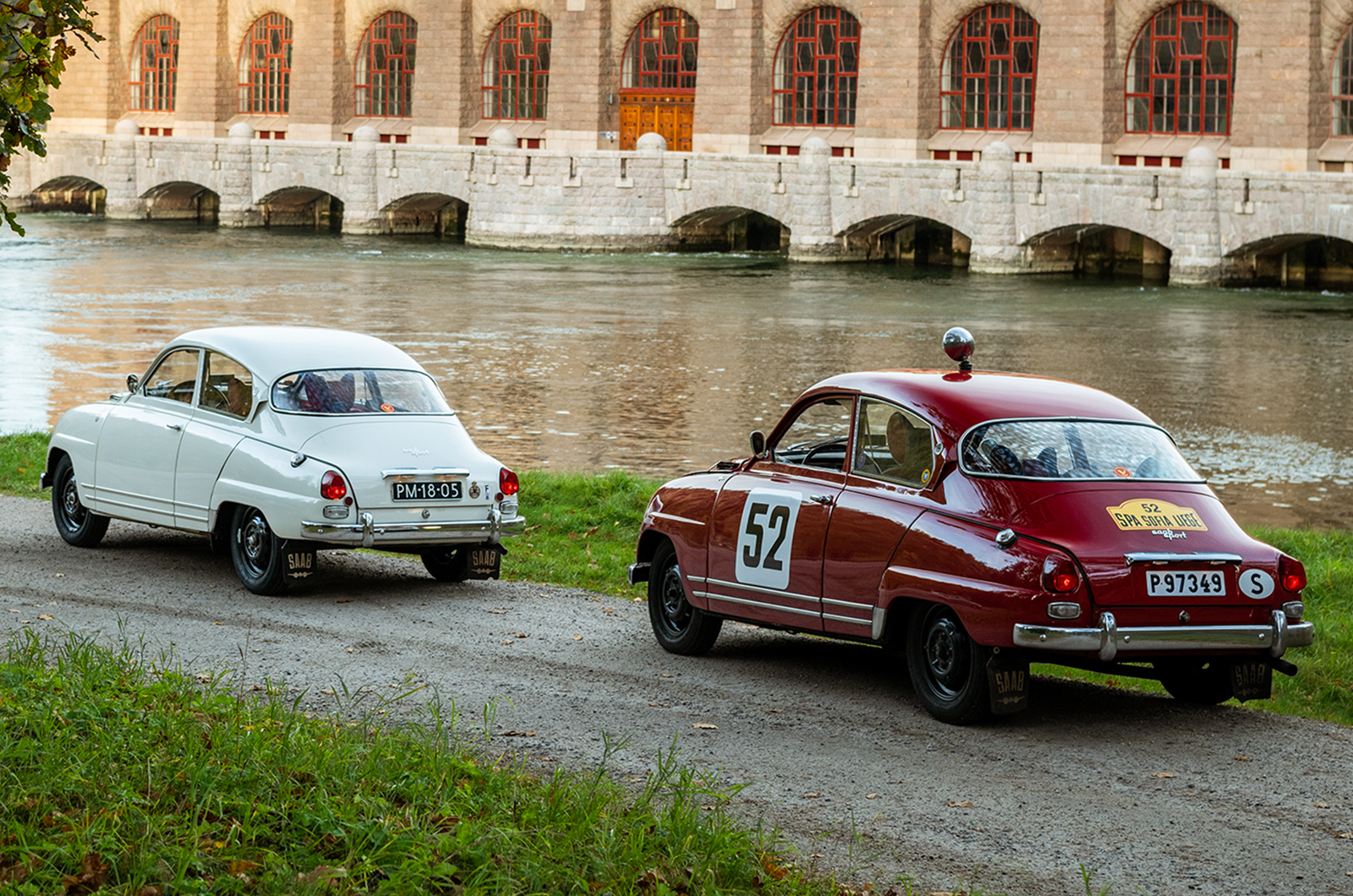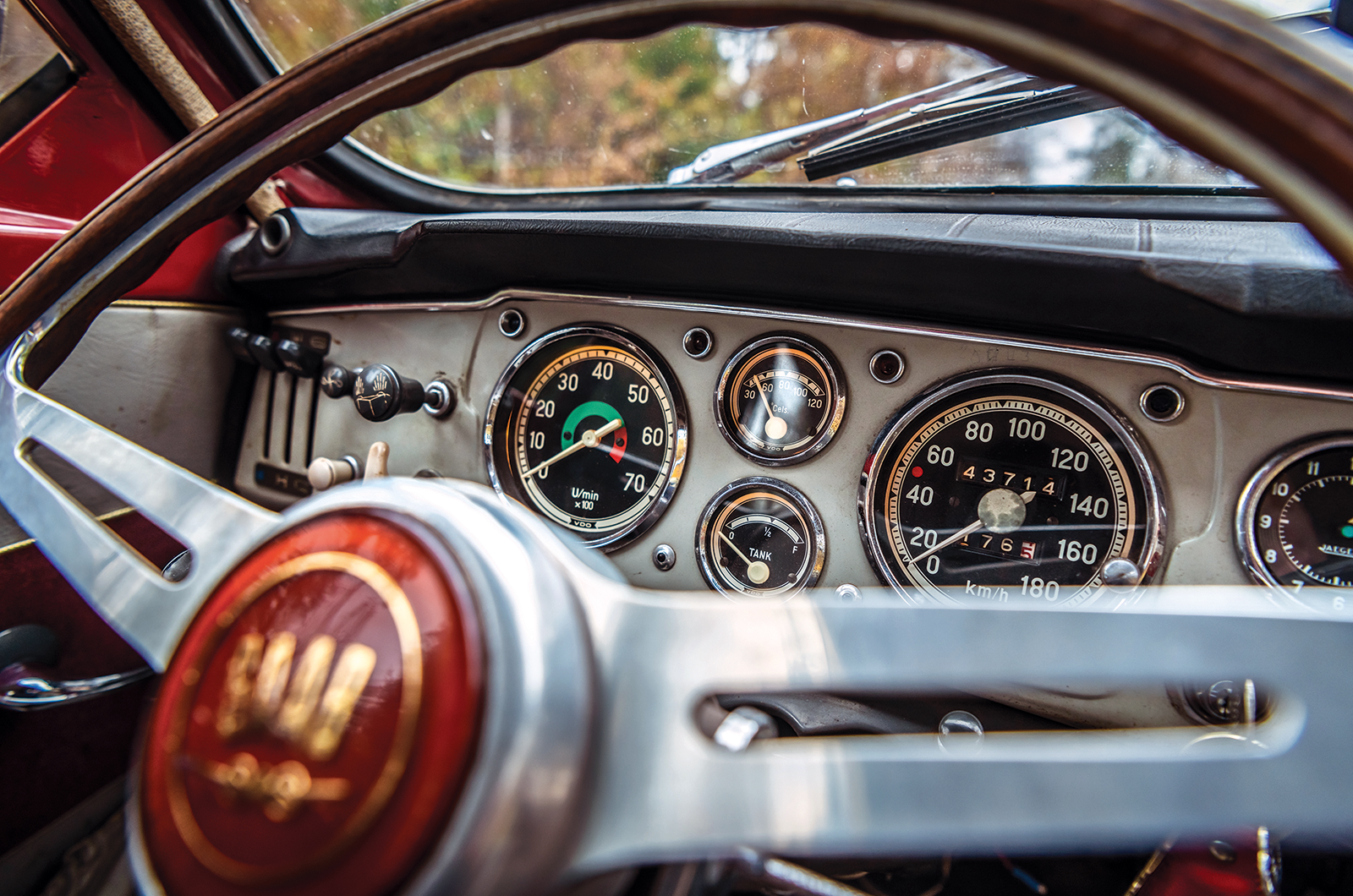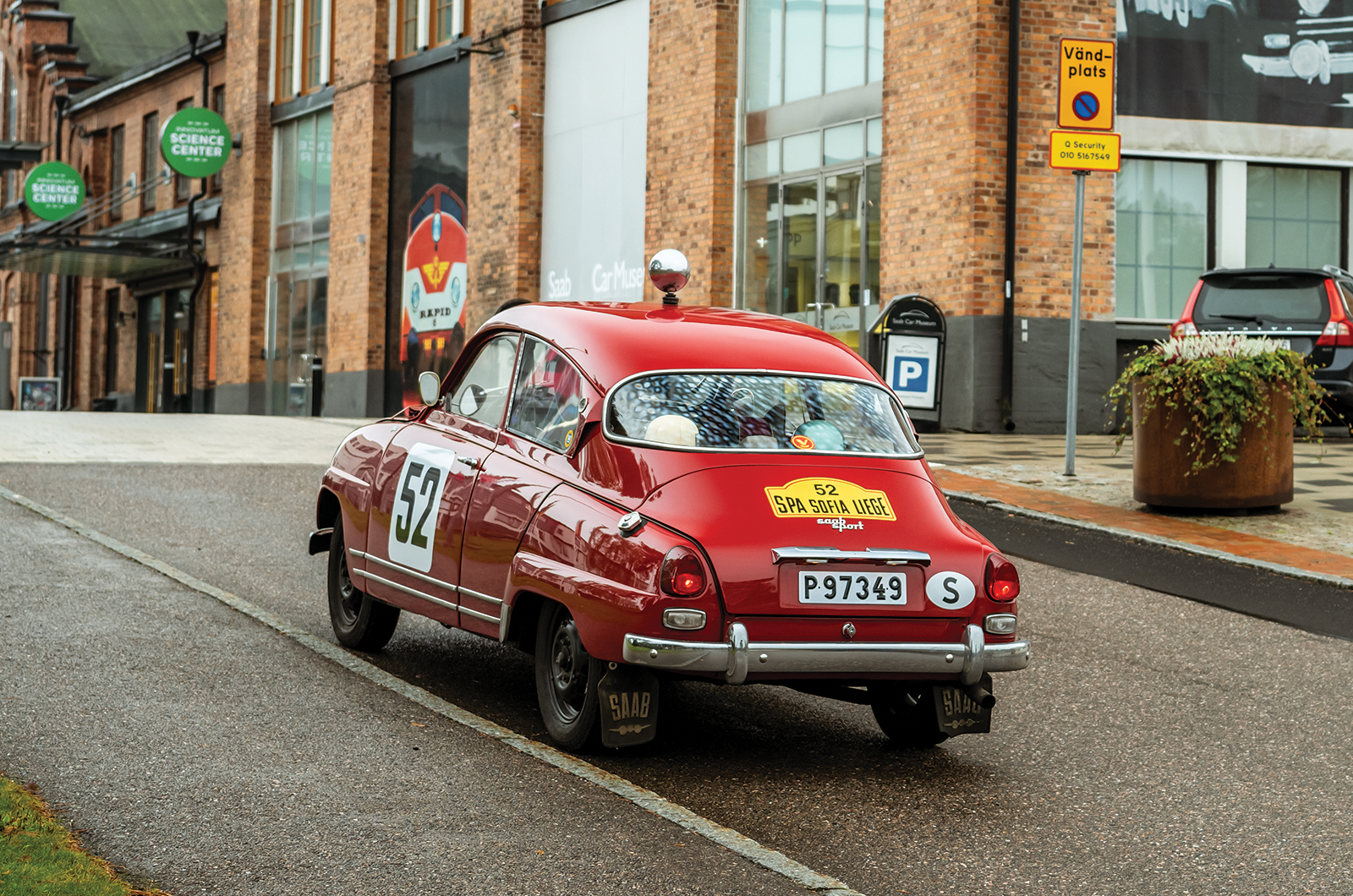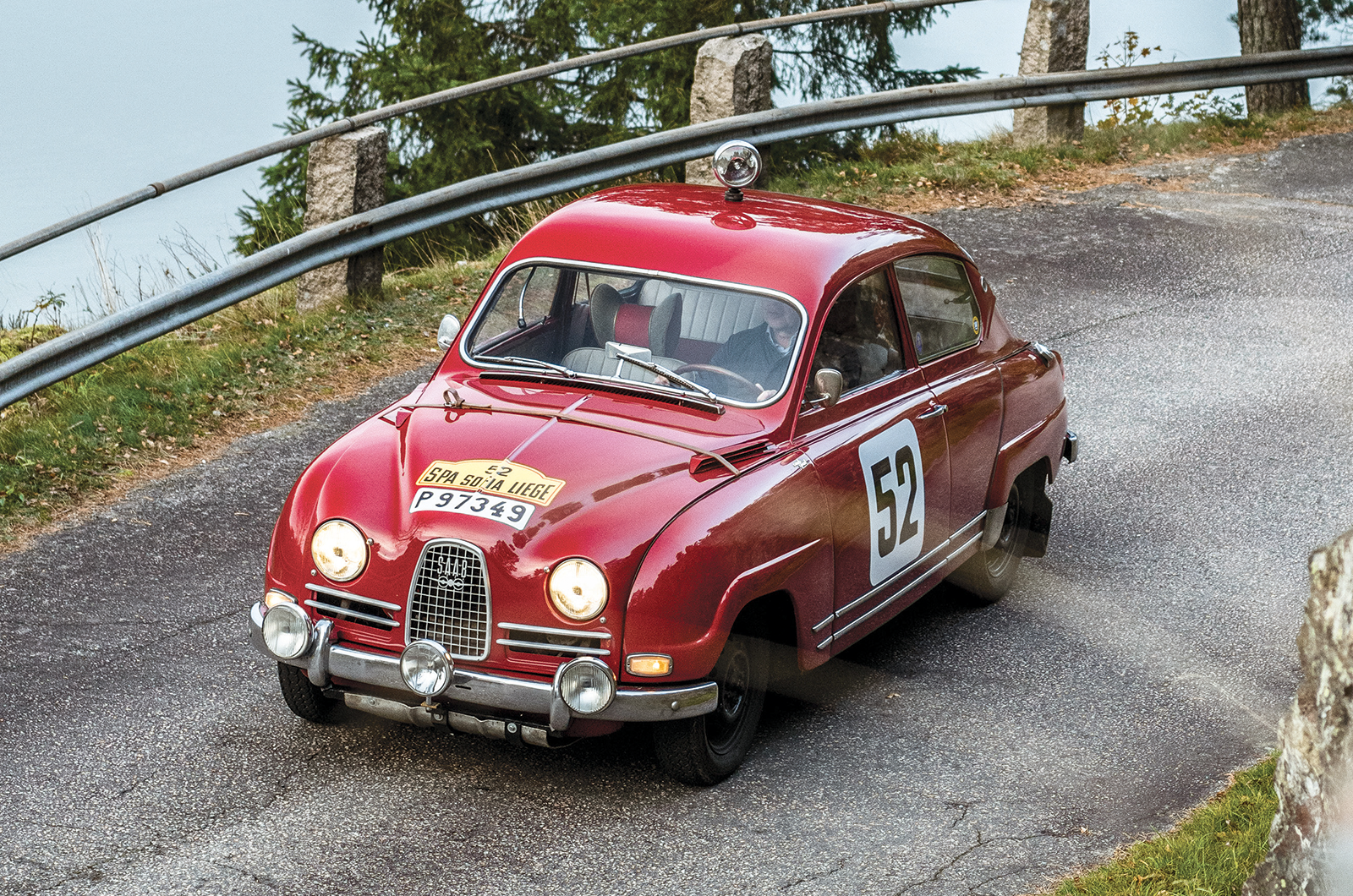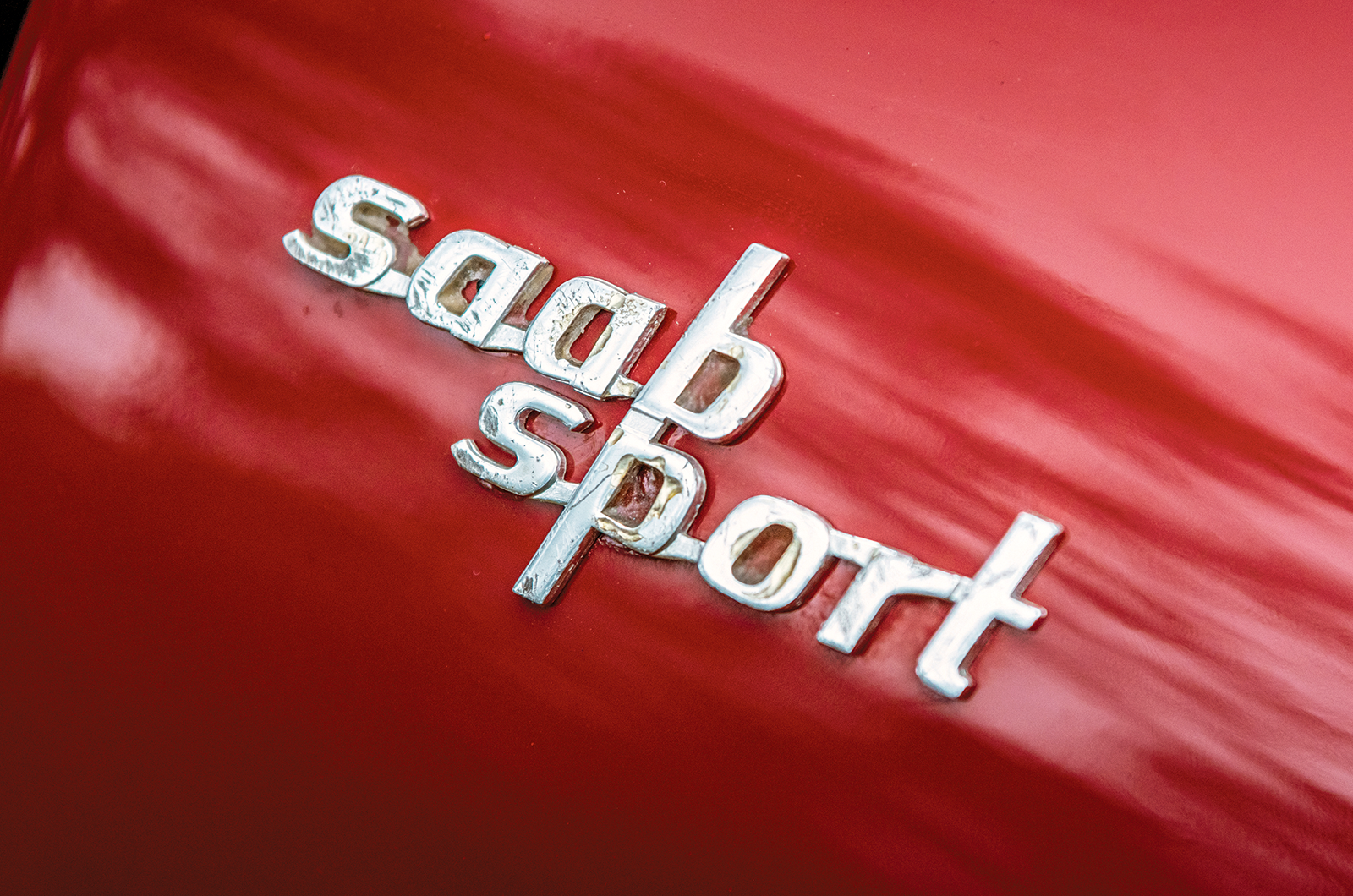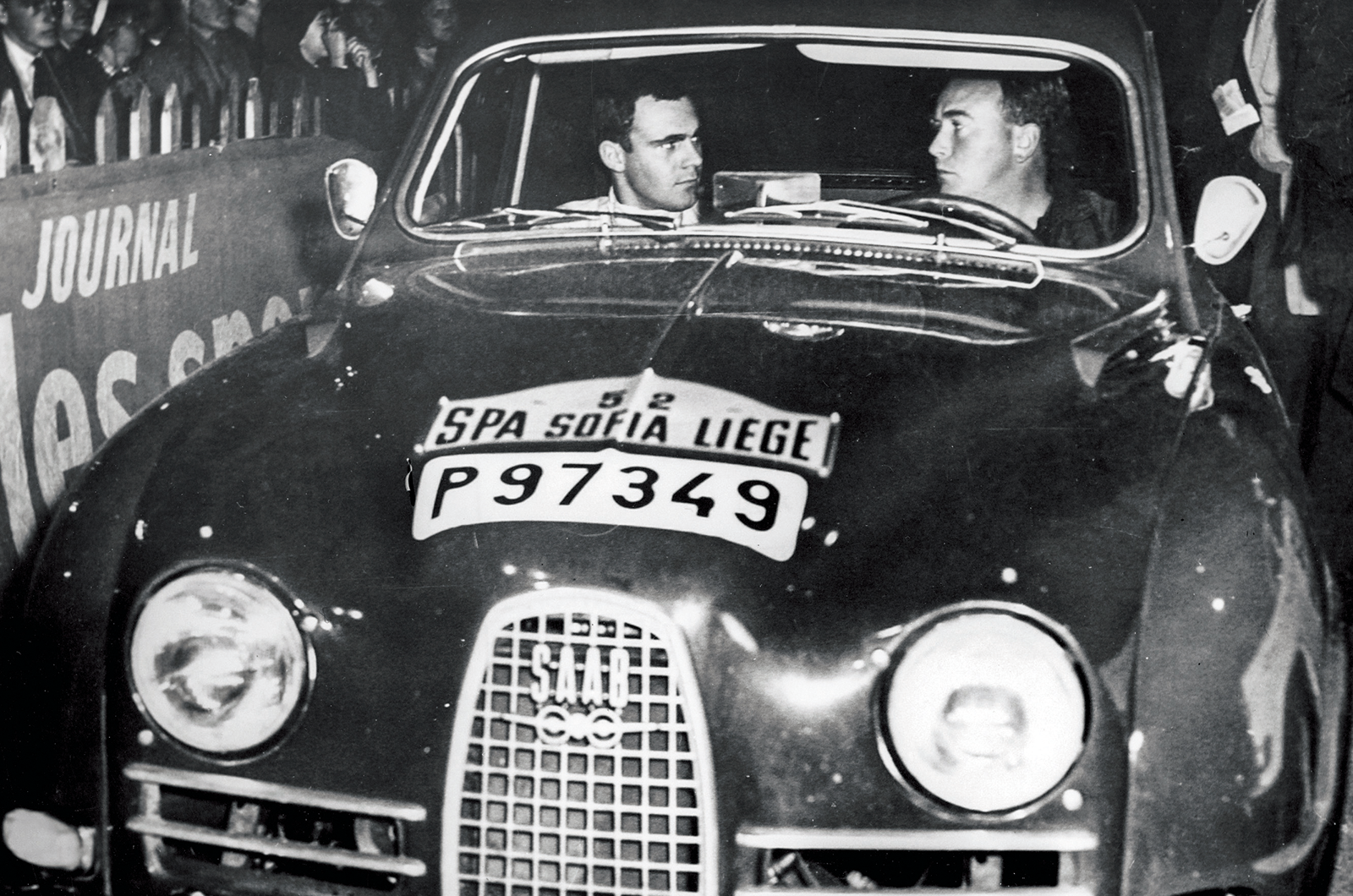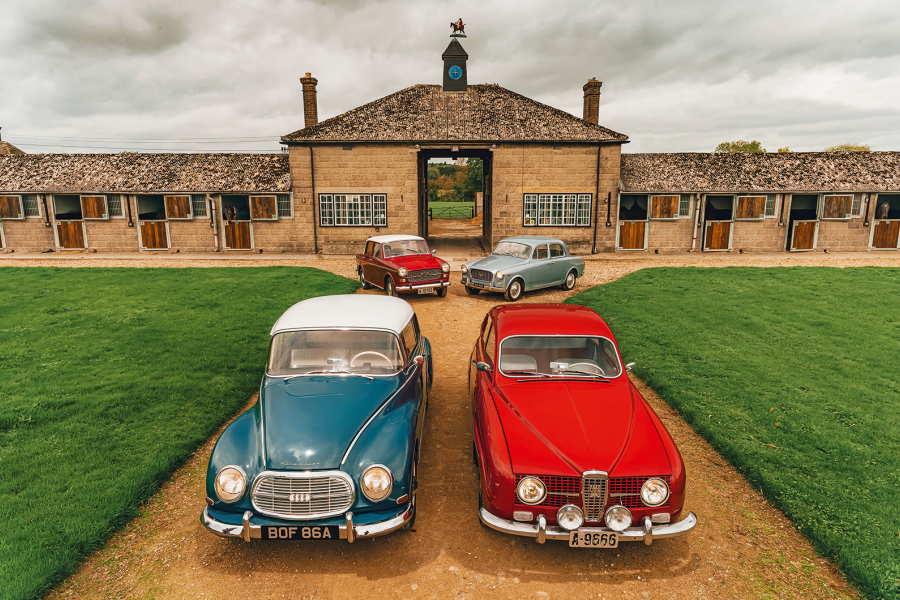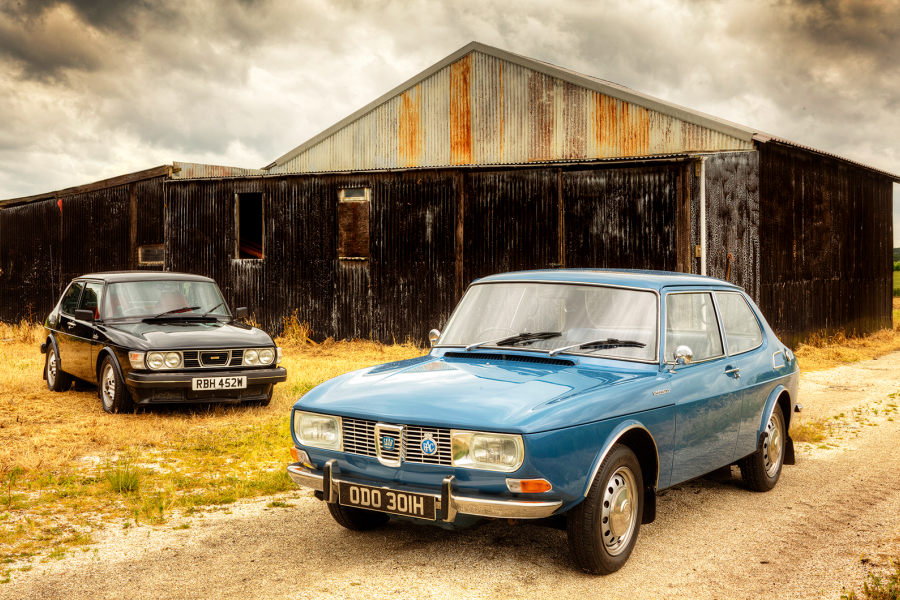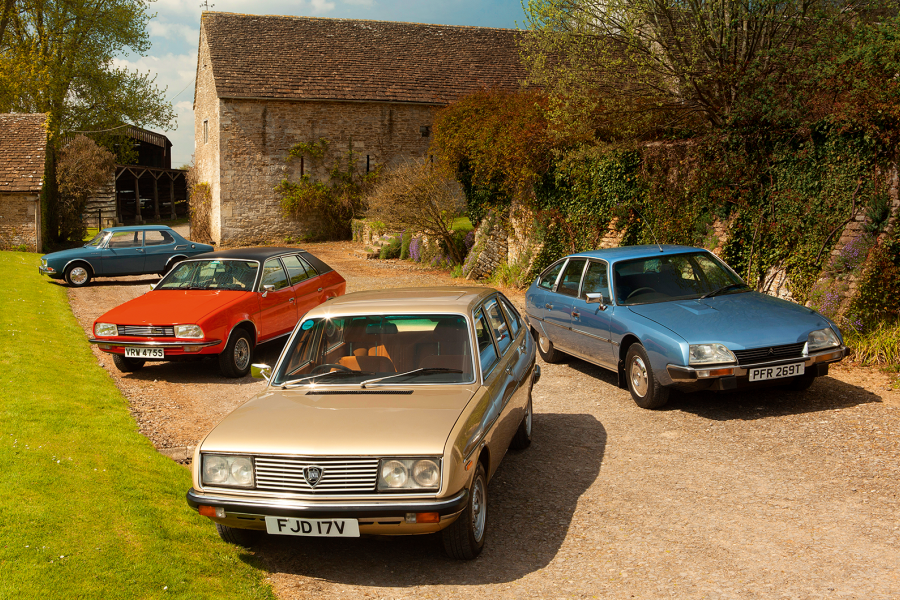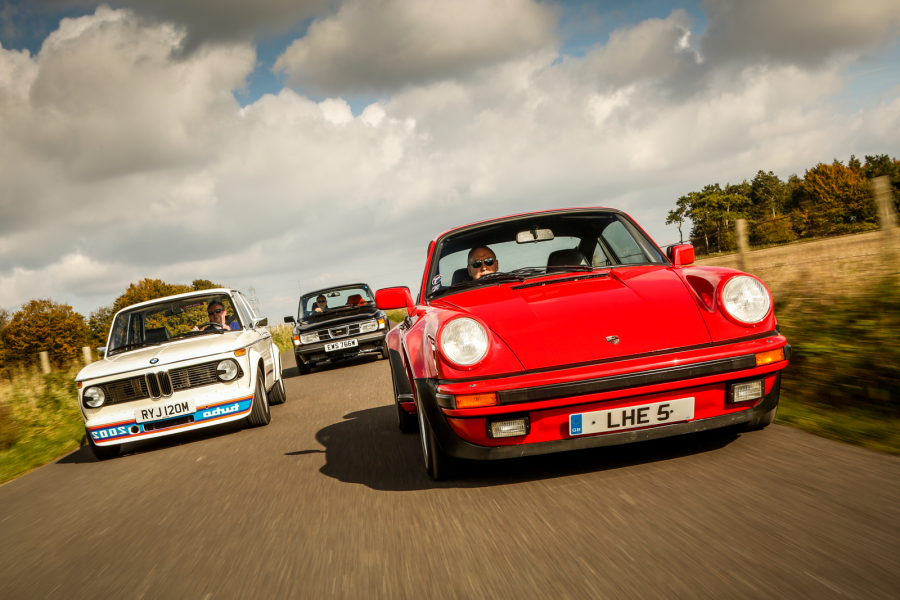“Eugen Böhringer, who had won in 1962 with a 220SE but drove a 230SL in 1963, was our biggest rival but the Mercedes team was never arrogant and was always very sporting.”
Driving around the outskirts of Trollhättan in the 96 Sport in which Palm spent so many hours, the three-cylinder two-stroke crackles merrily as the former co-driver deftly steers it over the gravel routes Carlsson used to fine-tune the works cars.
Ahead, the dash features a pair of Heuer clocks, plus a Halda Speedpilot and Tripmaster, giving it an aircraft look – highly appropriate for a Saab.
The original Heuer clocks are still in place
“The seats are too high,” Palm notes. “Erik sat almost on the floor.”
He’s right, of course, and Bakker has already tracked down the original seats to put back in.
Saab’s ever-evolving rally weapon started out with an 841cc two-stroke triple mounted ahead of the front axle, delivering 38bhp and 59lb ft of torque with a single Solex 40 BI carburettor.
‘The dash features a pair of Heuer clocks, plus a Halda Speedpilot and Tripmaster, giving it an aircraft look – highly appropriate for a Saab’
The 96 in which Carlsson and Palm won the 1963 Rallye Monte-Carlo featured machined and polished ports and higher compression, giving 70bhp at 6000rpm – which reportedly sounded more like 12,000.
The drive for ever more power led to the 96 Sport, called the GT 850 in the US market, which featured three Solex 34 BIC carbs.
It got disc front brakes, a four-speed ’box and a separate 3-litre oil reservoir with a pump to lubricate the two-stroke for up to 2500km, so that regular pump petrol could be used.
Modifications to the 841cc two-stroke include three larger Solex carburettors plus a special airbox
In standard road form it was good for 52bhp, but in Group 2 form for the Spa-Sofia-Liège it used larger Solex C44 P3I carbs crowned by a sextet of air filters, which boosted it to 80-85bhp.
It would prove the perfect partner for Palm and Carlsson.
“We were then probably the first and only professionals in the sport,” recalls Palm, “in the sense that we made our living from rallying.”
A period-correct works team crash helmet
“All the other teams were paid per event,” he explains, “whereas Erik and I were put on the payroll after we won the Monte – plus a bonus for the risks we were taking.
“Because of this, I was able to spend a lot of time on preparation and organisation.
“After the Monte we both got an envelope from the top brass, as a token of appreciation, with 2500 crowns in it – about €2800 today.”
Gunnar Palm, back behind the wheel of a Saab 96 Sport nearly 60 years after the model brought two of his greatest results alongside fellow famous Swede Erik Carlsson
Palm is modest about his own contribution, repeatedly praising Carlsson’s skills, yet their success wouldn’t have come without his exacting preparation.
Palm did all the reconnaissance for the rally, driving a 96 from Trollhättan to Liège, then on to Sofia and back, to find the fastest course between controls and analyse the route in detail: “I found some maps of Yugoslavia in the library in Vienna that were much more detailed than I had seen before, so I started looking for shortcuts.
“We took advantage of that when we were stuck behind one of the Citroëns with no opportunities to pass.”
Palm did all the reconnaissance for the rallies, analysing every route in detail
“I had marked places where we could cut off a stretch of road if necessary, so I made Erik turn left down a narrow lane, past farms, across yards and almost through a barn,” Palm remembers.
“When we turned back on to the main road, the DS21 whizzed past.
“Erik got mad, until we realised it was another Citroën that had started 10 mins ahead of us!”
In standard road form, the Saab 96 Sport (left) was good for 52bhp
The importance of preparation was also apparent during the mass restart in Sofia, after the mandatory hour’s rest.
“Everyone rushed to the main road, because you didn’t want to drive in someone else’s dust,” says Palm.
“I had mapped out an alternative route through narrow alleys beforehand, and it worked: we turned on to the main road 5m ahead of the lead car.”
The car has a well-stocked dash with stylish instruments behind the three-spoke sports steering wheel
The reconnaissance demanded a lot in terms of organisation – and improvisation: “While exploring the mountain roads near Kotor, now in Montenegro, I collided with a truck.
“In a nearby village they took care of the injuries to my face and a truck driver took me to a town where I organised for the Saab to be picked up.
“I called the Swedish embassy in Belgrade to arrange a ticket to Sweden, then hitchhiked to Rijeka from where I was able to fly on a DC3 to Belgrade, then on home.
“Back in Trollhättan I got into a new Saab and drove the 2500km back to Kotor to finish the recce – all non-stop, with Pat Moss’ navigator Liz Nyström.”
The Marathon de la Route competitor returns to its birthplace of Trollhättan, Sweden
Spots were identified where the service team could be ready with fuel, because the tuned 96 used a litre every 3km when Carlsson had his foot down: “There had been a major earthquake in Skopje, and I had noticed during my recce that there was no petrol for miles around.
“The mechanic left Trollhättan in plenty of time, taking empty jerrycans and assuming he could fill them when he got there, but he couldn’t.
“He was very embarrassed. Luckily, the Mercedes team helped with fuel, or we would not have been able to continue.”
The sound of the rasping triple rings across Havstens Fjord
Among the other rallies tackled by Carlsson and Palm was the epic East African Safari.
In 1963 they had to retire, but in ’64 the pair drove their 96 Sport to a brilliant second, sandwiched between a pair of Ford Cortina GTs.
“The Safari was also tough for the cars. A win was the ultimate proof of your brand’s durability.”
At the time, Saab’s crew was probably the first and only that competed for a living, permitting thorough preparation
He continues: “What made it different from the Spa-Sofia-Liège was that the pace wasn’t so relentless: you could take a break every now and then.
“It was also a lottery because there were so many things you had no control over – the wildlife, the terrain, the weather. The rain could turn the road into a washboard or a swamp in the blink of an eye, or make it disappear altogether.
“You had to take care of your car: the experienced teams said that to use its maximum potential you had to drive in such a way that your car collapsed exactly on the finish line.
“There were years when 100 cars started and only seven finished.”
Palm and Carlsson at the start of the 1963 Spa-Sofia-Liège © Saab Car Museum
Palm tackled the Safari seven times, twice with Carlsson and the rest in Fords, yet still cites the two podium finishes on the Marathon as his greatest performances.
Speaking at a memorial service for his great friend in 2015, Palm said: “Erik, if you want to impress your new audience up there, tell them about your two second places in that rally from Liège, the best two drives
of your life.
“There is no need to exaggerate – they won’t believe you anyway!”
Images: Luuk van Kaathoven
READ MORE
Compact quality: Neckar Europa vs Lancia Appia vs Auto Union 1000S vs Saab 96
From the left field: Citroën CX vs Lancia Beta vs Princess vs Saab 99
TR4: Triumph’s rally underdog
